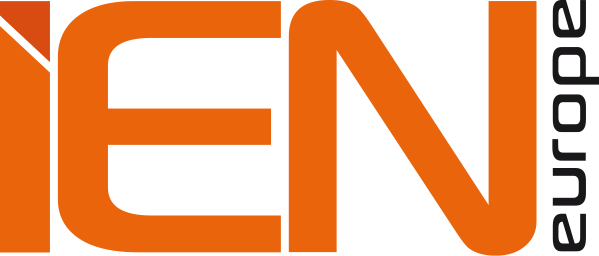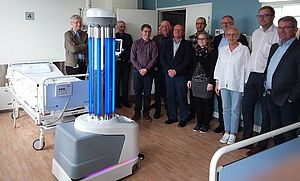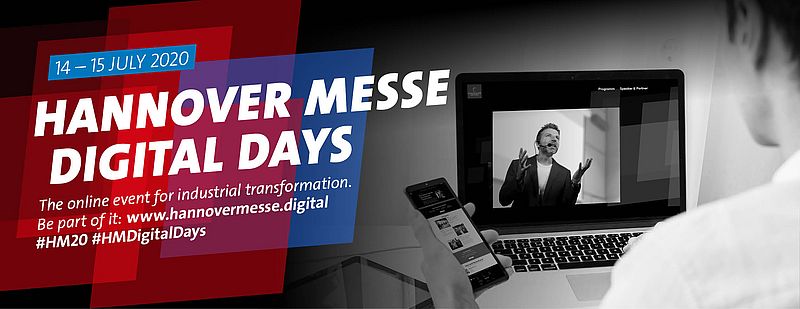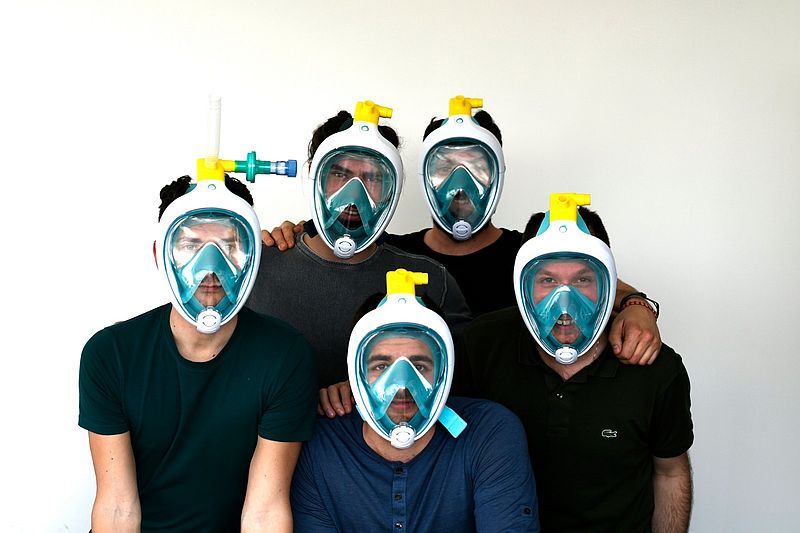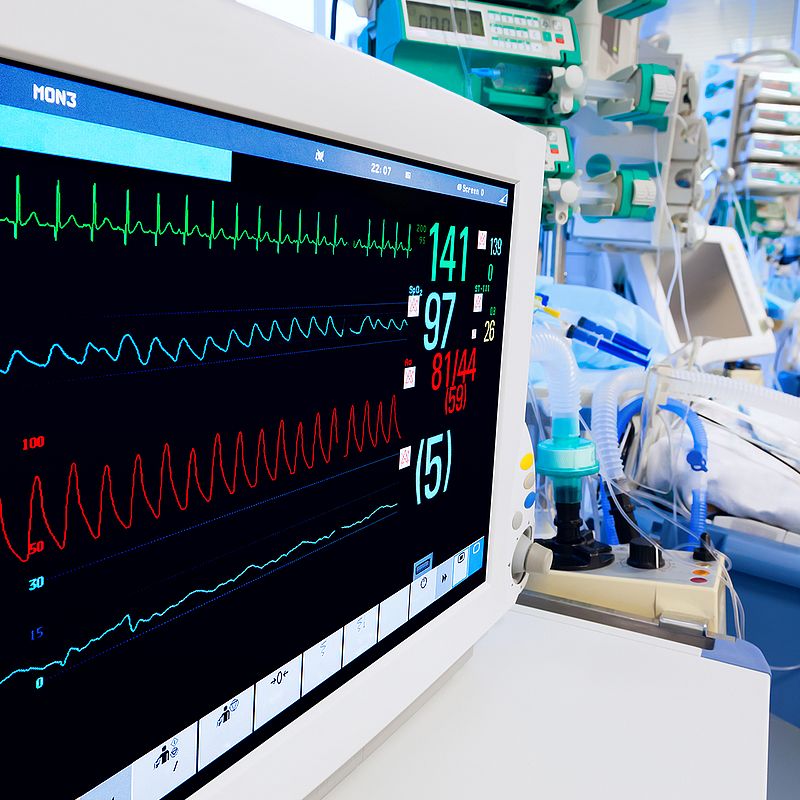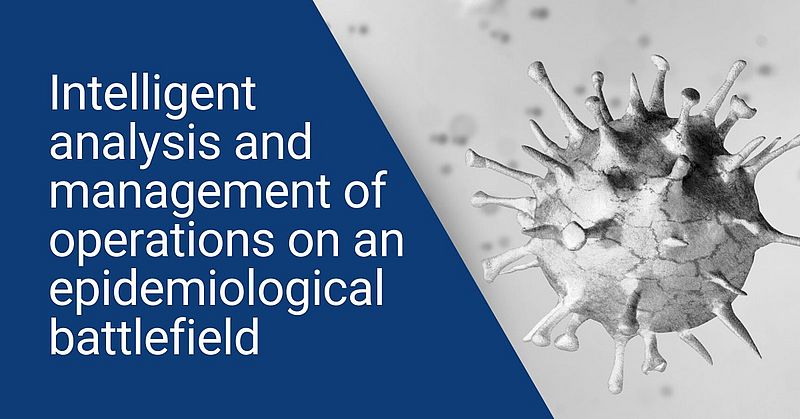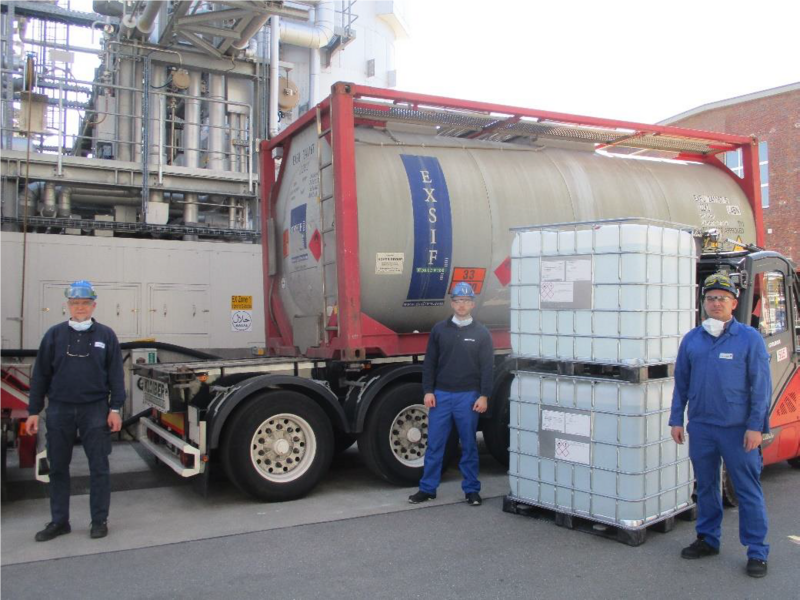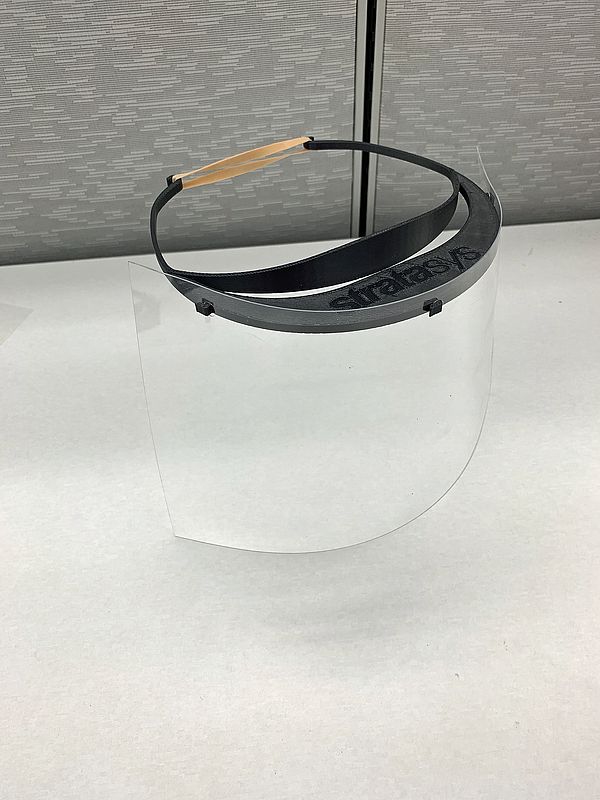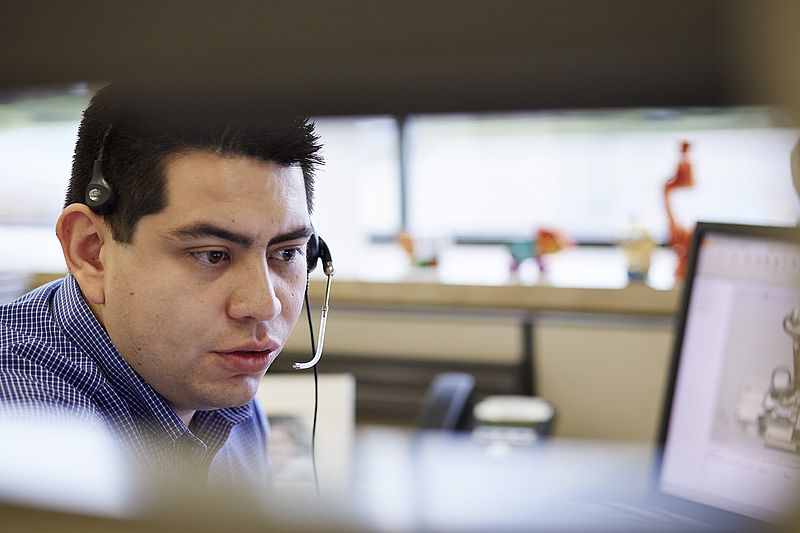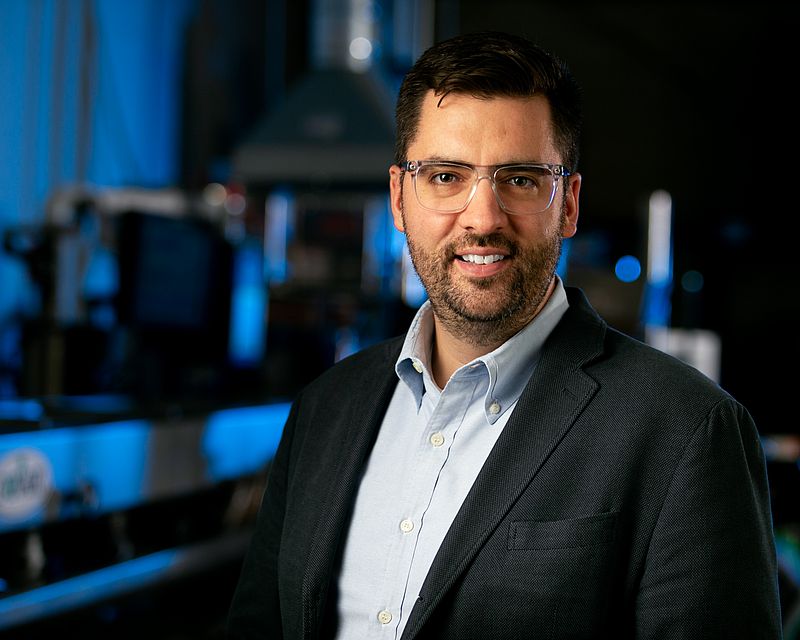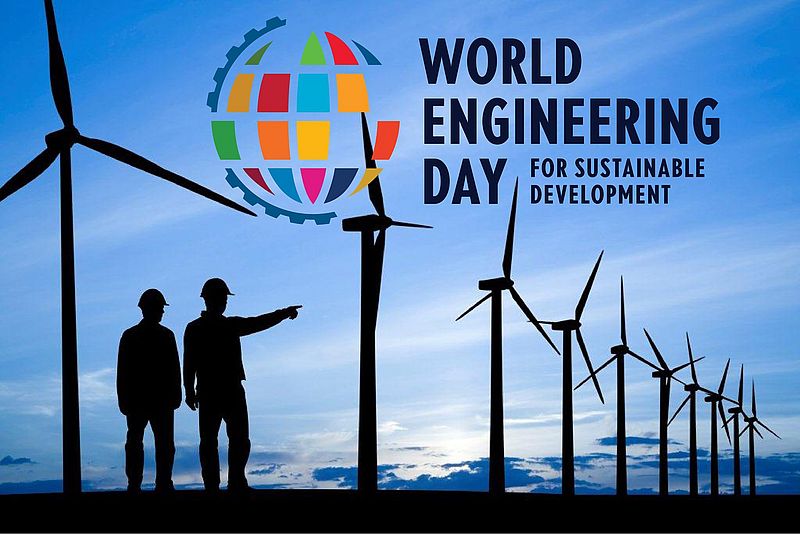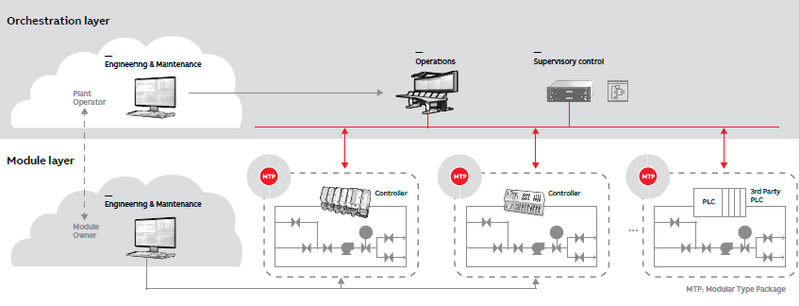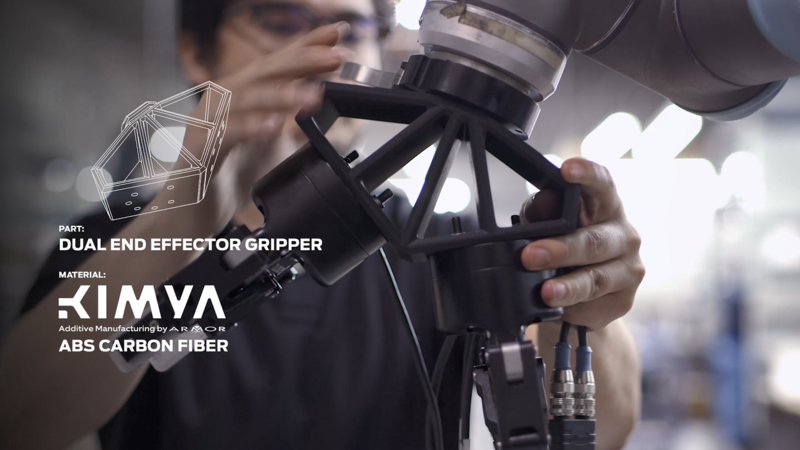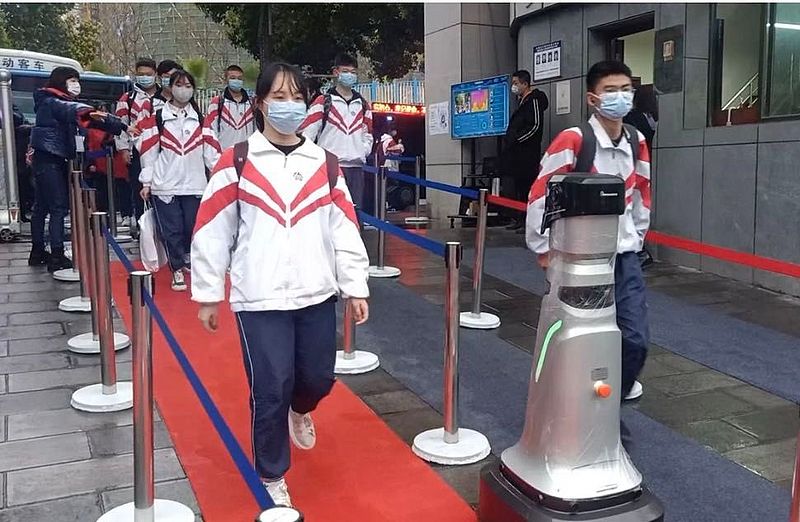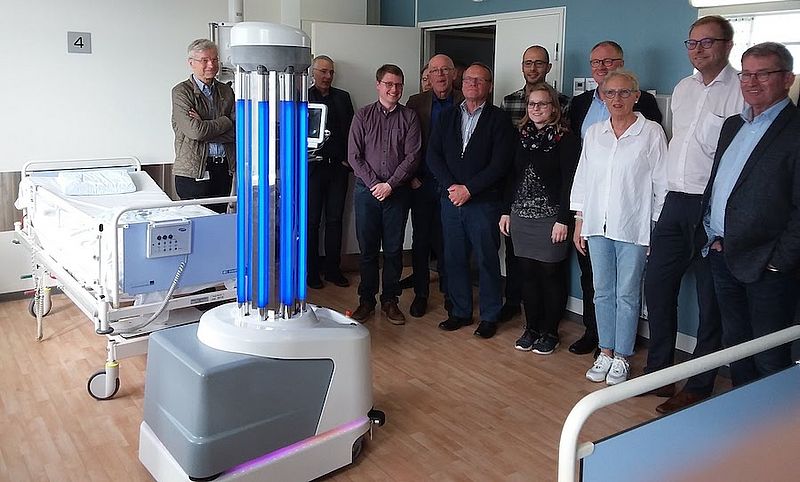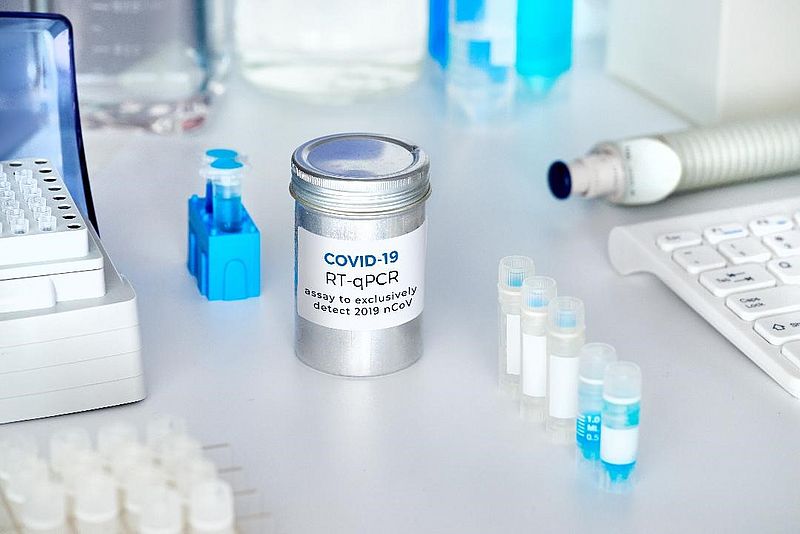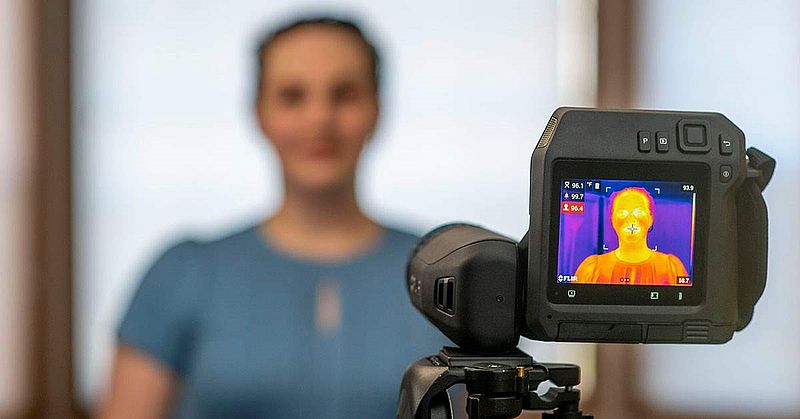Quick access
News: Hannover Messe Digital Days2 Article: The Impact of Covid-19 in the European Manufacturing Industry3 Trade Shows: Postponed or Cancelled?4 Interview: Isinnova5 Covid-19 News: Schurter & Datawalk6 Covid-19 News: Analog Devices & Xilinx7 Interview: Onuora Ogbukagu8 Virtual Round Table: PTC9 Virtual Round Table - Endress+Hauser / Xilinx10 Interview: Stratasys11 Covid-19 News: Clariant & Stratasys12 Covid-19 News: ABB & Europump13 Article: Blockchain and Machine-as-a-Service14 Article: The Value of Engineering in Critical Times15 Interview: Essentium16 Business Continuity17 3D Printing18 Patrol & Disinfection Robots19 Scanner & Thermal Smart Sensor20 FPGAs, Face Shields & Thermal Imaging21 Whitepaper: ABI22Companies in this issue
20 ABB Ltd17 ABI22 Advantech Europe B.V.19 BLUE OCEAN ROBOTICS19 Clariant International Ltd12 DataWalk Inc.6 Deutsche Messe AG8 Endress+Hauser Group Services10 Essentium16 FLIR SYSTEMS21 ISINNOVA S.r.l.5 MakerBot Industries - Stratasys18 Ptc9 Solvay21 Stratasys11 Stratasys Inc.12 Xilinx Europe10 Ziath20Deutsche Messe Launches Hannover Messe Digital Days to be Held from 14 to 15 July 2020
The online event for the digital transformation will premiere on July 14 and 15. This new two-day digital event provides an overview of current developments in the fields of industry, energy and logistics
Automation, Covid-19, Industry 4.0
Hannover Messe goes digital with the Hannover Messe Digital Days, taking place on July 14 & 15! For the first time, Deutsche Messe launches a two-days digital event that will show which paths industry is taking out of the crisis and how industrial transformation with all its facets is developing.
With its mega topics of digitalization, individualization, climate protection, and demographic change, industrial transformation is the focus of the Hannover Messe Digital Days, despite the Corona crisis. This new two-day digital event provides an overview of current developments in the fields of industry, energy and logistics and provides orientation for the time during and after the crisis.
Don't miss Hannover Messe Digital Days on July 14
Hannover Messe Digital Days start on 14 July with exciting keynotes from business, science and politics as well as panel discussions, live chats, networking, and innovation presentations. Everything revolves around the questions of how industrial transformation can succeed and which steps industry must take to recover quickly from the consequences of the shutdown.
"With the Digital Days, we are creating an online platform for the entire Hannover Messe community. We had to cancel the show this year due to the corona pandemic, but people still need to learn about the latest technological products and solutions and to talk with experts from all over the world. Because tomorrow's innovations are only possible when different industries and cultures exchange ideas," says Dr. Jochen Köckler, Chairman of the Managing Board, Deutsche Messe AG.
Virtual show to tackle the crisis
The Hannover Messe Digital Days revolve around the content of the show. For example, the conference program focuses on topics such as Industrie 4.0, artificial intelligence, smart energy, and Logistics 4.0. Exhibitor products and solutions form the second layer of content. Networking also plays a prominent role: All participants can search for suitable business and cooperation partners and contact each other directly using the chat function.
One of the biggest highlights is the HERMES AWARD ceremony. For the first time, this internationally coveted technology prize will be awarded digitally. A jury chaired by Dr. Reimund Neugebauer, President of the Fraunhofer-Gesellschaft, chose the winner from numerous high-quality submissions. The announcement will be made on 14 July.
Hannover Messe Digital Days
Hannover Messe is the world’s leading trade show for industrial technology. With the lead theme Industrial Transformation, it spotlights all of the latest topics in industry, including Industrie 4.0, artificial intelligence, 5G, and smart logistics. Hannover Messe is expanding its portfolio this year with a digital event, Hannover Messe Digital Days, which premieres from 14 to 15 July.
How Coronavirus Might Impact European Manufacturing Industry
Now that China is slowly getting back to normal, normality looks like a faraway lighthouse for the rest of the world hit by the virus. Dark times are on the horizon for the manufacturing industry but a rebound with no major consequences is still possible
Covid-19
While we struggle with quarantine and an upside-down new lifestyle, where ‘’analog’’ social interactions are reduced to zero and new work-life balances are to be chased – if we are lucky enough to be among those people who have to commute every day from the bed to a makeshift home office, the world risks the most serious recession of the last 75 years. The industrial world will be inevitably impacted as well, with consequences that are still hard to predict.
Let’s take the world’s top industrial leading countries of the G10. All of them have been seriously hit by the COVID-19 pandemic. Some European countries – specifically Italy, Spain, France, Portugal, Ireland, Belgium, Luxembourg, Slovenia, and Greece – have urged the EU to support European economies with a common debt instrument, the so-called ''Coronabonds'', to ‘’raise funds on the market on the same basis and to the benefits of all member states”, as the leaders from the nine countries wrote in a joint letter to European Council president Charles Michel.
A deep recession is upcoming
Their legitimate fear is that we are just at the beginning of the hardest crisis after the Second World War. This would result in a long and grueling recession bringing the Eurozone to its knees. The reverse of the medal has arrived after more or less a month from the first European lockdown measures in the North of Italy. At that time, most of the governments, scientists, leaders, analysts, politicians, spin doctors, and citizens were underestimating the situation or showing too much optimism. Some of them still talked about a ''simple flu’’. A fatal – but physiological – error that could cost a few economies well above 150% of GDP. Goldman Sachs predicted that Italy’s debt-to-GDP ratio will rise to 161% this year, just to make an example.
Mario Draghi, the former President of the European Central Bank, stated in an article to the Financial Times dated March 25, that ''deep recession is inevitable’’ and it’s therefore evident that it’s not the time to keep the numbers straight but rather to spend, increasing public debt, ‘’to prevent the recession from morphing into a prolonged depression, made deeper by a plethora of defaults leaving irreversible damage.’’
Lockdowns and travel restrictions squeeze global markets
In this scenario, the manufacturing industry is inevitably suffering. It’s still too early to get actual numbers but the elements we can analyze just observing the current situation help make some predictions.
On March 11, the World Health Organization declared the coronavirus a global pandemic. From there, as of March 27 more than 500,000 cases worldwide have been confirmed (see Figure 1). Cases in Europe have already surpassed the recorded numbers in China, but the US alone overtook Mainland China with more than 85,000 confirmed cases (see Figure 2). On March 16, the EU decided to close all Schengen borders for 30 days and several travel restrictions have come into force in many countries (see Figure 3).
Presently, a third of the global population is on coronavirus lockdown. From the outbreak to the escalation of the epidemic, national lockdown and quarantine measures have gradually been adopted in many European countries. Italy was the forerunner on March 10, followed by Denmark (March 11), Norway (March 12), Spain (March 14), France (March 16), Belgium (March 17) and finally the UK on March 23. In Italy, the severe situation forced Giuseppe Conte, the Prime Minister of the second greatest industrial power in Europe, to announce stricter measures on March 21 and shut down all non-essential manufacturing activities until April 3.
What does this all mean for the manufacturing industry? Even though, besides Italy, no other European countries have extended the lockdown to the manufacturing industry or to trade in goods yet, the picture described above makes it very hard for manufacturers to keep up with production, supply and sales for many reasons.
What to expect for the manufacturing industry
As a starting point, we need to consider the impact of Chinese economic and production disruption on the rest of the world. In China, the epidemic is under control now. People are slowly starting to go back to work and factories have been gradually allowed to reopen. According to Jan Zhang, Research Director at Interact Analysis’s office in Shanghai, around 17% of Chinese shutdown manufacturing industries have restarted their production.
It’s important to notice that Wuhan/Hubei, the most severely affected region by the outbreak, accounts only for 4% of China’s manufacturing industry, but it’s one of the four main centers of automobile production in the whole country. ''We have observed that so far in China the most affected sector is automotive. The supply chain has also been severely hit, as many OEMs and components suppliers have their facilities in China. This might have an impact on the global supply chain,’’ said Jos Walker, researcher at Interact Analysis.
Supply shock and export slump will hit manufacturers hardest
A supply shock, not only in the automotive industry, is to be expected in the short term. Figure 4 shows the impact of Coronavirus on different industries. The slowdown of the semiconductor and electronic components sector, which is one of the top industries with the largest number of workers in China, will have a significant impact on the tech industry.
European companies, especially small businesses, have already felt serious supply constraints as a consequence of demand decline and exports slump. ‘’Demand and sales in German industry are declining, resulting in supply bottlenecks, production stops and reduced working hours for employees,’’ reported Deutsche Messe, the largest trade fair operator in Germany. In the UK, the government has been called to action already in mid-March, ten days before the lockdown, to support British manufacturers, who are now further weakened by the downturn in world trade and the fall in exports after the economic standstill that followed Brexit at the end of 2019. As researchers at Interactive Analysis have observed, China has seen a 70% sales drop - and sometimes even 100% - since February, especially during the severe quarantine. Europe may, therefore, follow the same trend.
How to keep the disaster short-term
Some analysts believe that the negative impact of Coronavirus on economies will be just short-term. If, on one hand, quarantine measures will cause a sharp economic downturn, on the other hand, a lot depends on when and to what extent the measure adopted will bear fruit. That’s why the next weeks are critical to understanding the real impact of COVID-19 on manufacturing, especially in countries like Italy, France, Germany, Switzerland, and the UK.
‘’For many of the infected regions, the economy will fall sharply in the short term, and then rebound after the epidemic is over, but COVID-19 is unlikely to have a major long-term impact. The effect of local government’s prevention and control of the epidemic is key,’’ recently declared Jan Zhang. Rebound times will depend a lot on how quickly the virus will be under control. But much will be determined also by the resilience and responsiveness of industry. Joint and decisive measures with governments – at a local and European level – are essential. ‘’Since European countries are closely interconnected in all aspects, urgent and joint actions are needed from the EU and all European nations to stop the disease from spreading further,’’ declared Prof. Gong Ke, President of the World Federation of Engineering Organizations.
However, this could be the time to analyze flaws and problems in the industrial system and fill in the gaps by implementing improvements to better manage disaster emergency and guarantee supply chain operations. To this end, highly automated processes, where digitalization and robotics are at the heart, could not only come to the rescue but they might be the only way from now on. Augmented reality and virtual reality could mark a new era of smart working with human beings at the center.
Is another industrial revolution already around the corner?
Sara Ibrahim
Coronavirus Squeezes Germany on Trade Shows
According to a survey conducted by AUMA, the Institute of the German Trade Fair Industry, Germany may lose up to three billion euro just for the cancellations and postponements of trade fairs
Covid-19
How much has covid-19 impacted the trade fair market? Germany, the world's major trade fair venue, has already been hit hard by cancellations and postponements of trade fairs. Trade fair organisers and service providers like booth constructors are already suffering from heavy financial losses. Many other branches of business are affected as well, especially the hotel and catering industry, the transport industry and numerous local suppliers and contractors. These industries are suffering considerable losses in sales with a direct impact on employees. Due to sales losses the tax revenue will fail, hence cities or regions are directly affected economically.
AUMA’s Institute of the German Trade Fair Industry has forecasted the consequences for Germany for the first time based on the calculation of the ifo Institut in regard to the macroeconomic relevance of German trade fairs in 2018.
Loss of about three billion euro expected
A loss of about three billion Euro for the national economy is to be expected – just by cancellations and postponements of trade fairs. This affects more than 24,000 jobs and tax authorities will miss over 470 million Euro of tax revenue.
These sums do not include lost sales of companies, which had expected to generate turnover during the trade fair. These figures are many times higher than the above-mentioned sums and can only be substituted to a limited extent through other measures. No other marketing device is able to represent a company and its products as comprehensively as the personal contact.
Philipp Harting, Chairman of AUMA: trade fair industry’s input to national economy could decrease by 10%: “Almost all plans for trade fairs during the next months are null and void. Organisers, exhibitors, visitors and contractors are losing any planning reliability. They have high up-front costs without the prospect of any benefit or they suffer from severe and acute loss of sales. The trade fairs’ annual contribution of more than 28 billion Euro to the national economy could decrease by 10%. It has to be made sure that the (German) economy – particularly small and medium-sized enterprises – in future will be able to utilise the highly effective instrument called “Messe” (trade fair) and can continue cooperating with potent contractors. Without governmental support this can hardly be realised, despite great efforts of the exhibition industry itself.”
The importance of Germany for the trade events market
Germany is number one worldwide in terms of organising international trade fairs. Annually 160 to 180 international trade fairs take place in Germany, with 180.000 exhibitors and ten million visitors. Partners from all over the world meet up on German exhibition sites.
German exhibiting companies are investing almost half of their b2b communication budgets in trade fair participations. The expenses of exhibitors and visitors for trade fairs in Germany result in macroeconomic production effects of more than 28 billion Euro. More than 230,000 jobs are ensured by the organisation of trade fairs. Tax revenues based on trade fairs sum up to approx. 4.5 billion Euro annually.
Postponed or Cancelled?
The health crisis forced many event organizers to postpone or cancel their shows. In the trade industry, the shifts have been significant. Here you find an updated list of major trade events that were postponed or cancelled
Automation, Covid-19, Industry 4.0, Sensor Technology, Test & Measurement
The Coronavirus outbreak has heavily impacted the trade fair industry, creating confusion, uncertainty and a thorny scenario for organizers and exhibitors. Many shows have been cancelled or postponed, resulting in important economic losses.
The economic damage in Europe caused by coronavirus has been estimated as high as 5.8 billion euros. This could translate into thousands of job losses - around 51,400 jobs potentially lost in Europe according to EMECA, the European Major Exhibition Centres Association. We tried to shed light on the current situation with an updated list of the main trade events that were postponed or cancelled:
HANNOVER MESSE • Cancelled - The main trade show for industrial decision makers will not take place this year. Deutsche Messe invites to revive this year's event digitally. The new dates were announced at the end of March: April 12-16, 2021, Hannover (Germany).
SENSOR+TEST • Cancelled - The organizer AMA Service hesitated until the last minute before announcing at the end of April the cancellation of this year's edition, scheduled in June, for the prohibition of public events in Bavaria. The next appointment will be on: May, 4-6, 2021, Nuremberg (Germany).
LOGIMAT • Cancelled - The 18th International Trade Fair for Intralogistics Solutions and Process Management, originally scheduled for March 10 to 12 will finally take place next year: March 9-11, 2021, Stuttgart (Germany).
WIN EURASIA • Cancelled - As a consequence of the declaration of the Turkish Republic Ministry of Trade, the 2020 edition of the Leading Trade Fairs of the manufacturing industry in Eurasia was cancelled and we reopen its doors next year: March 10-13, 2021, Istanbul (Turkey).
GLOBAL INDUSTRY • Cancelled - The extension of lockdown measures in France has forced GL events to take the decision not to organise Global Industrie Paris in 2020. The event will be held next year in Lyon: March 16-19, 2021, Lyon (France).
PCIM EUROPE • Cancelled - To comply with the guidelines published by the Federal government, the international exhibition and conference for power electronics PCIM Europe will not happen this year. The new dates were recently announced: May 4-6, 2021, Nuremberg (Germany).
CONTROL • Cancelled - The 2020 edition of Control international trade fair for quality assurance had to be cancelled. The next edition will take place in 2021: May 4-7, 2021, Stuttgart (Germany).
JEC WORLD • Cancelled - Originally postponed to May 2020, the leading composites show was finally cancelled. The organizers will welcome visitors and exhibitors next year: March 9-11, 2021, Paris (France).
IFAT • Cancelled - IFAT, the world’s leading trade fair for water, sewage, waste and raw materials management taking place every two years, was initially postponed to September and then cancelled. The next edition will be held in 2022: May 30 - June 3, 2022, Munich (Germany).
SPS ITALIA • Postponed - The Italian exhibition for industrial automation and smart production solutions was finally postponed by Messe Frankfurt. It will take place digitally (SPS Italia Digital Days) in autumn: September 28-30, 2020, Parma (Italy).
MECSPE • Postponed - Also MECSPE, the leading exhibition for the manufacturing industry and Industry 4.0 in Italy, was postponed. The 2020 edition has been rescheduled for the second time: October 29-31, 2020, Parma (Italy).
AUTOMATICA • Postponed - Messe München decided to postpone the leading exhibition for smart automation and robotics to the end of the year: December 8-11, 2020, Munich (Germany).
Sara Ibrahim
Covid Breath: Scuba Mask Becomes a Respirator
In the Coronavirus pandemic, the startup Isinnova showed great inventiveness and expertise by transforming the Easybreath masks from Decathlon into emergency respirators thanks to a brilliant intuition and commendable teamwork
Covid-19
IEN Europe: ING. CRISTIAN FRACASSI, FOUNDER AND CEO OF ISINNOVA, CAN YOU EXPLAIN WHAT THE COMPANY DOES AND WHAT SERVICES IT OFFERS?
C. Fracassi: Isinnova is a research centre of the Lombardy region. We develop the ideas of companies, private individuals, and also our own. We carry out research for patents and we design and create prototypes, run test, file patents, and search for companies willing to put the idea on the market and we follow them in terms of communication. We also identify calls for tenders and financing to help our clients recover the money invested in Research & Development.
IEN Europe: WHY DID YOU CHOOSE THE FAMOUS THOMAS EDISON MOTTO "HAVING AN IDEA IS A GOOD THING, BUT IT'S EVEN BETTER TO KNOW HOW TO CARRY IT OUT"? HOW DOES IT REFLECT YOUR MISSION?
C. Fracassi: That motto reflects our work. Many have ideas that stay in their heads, like smoky thoughts. We want to be concrete, transform that smoke into something concrete, tangible, because only then does the idea not remain a hallucination.
IEN Europe: HOW DID THE IDEA OF MAKING 3D VALVES TO COPE WITH THE LACK OF THIS TYPE OF COMPONENTS WAS BORN, STARTING IN THE FIRST PLACE FROM THE HOSPITAL OF CHIARI, IN BRESCIA?
C. Fracassi: The hospital in Chiari (Brescia) had launched a request for help because it had run out of valves for the respirators used for Covid-19 patients and needed to have more spare ones quickly. Isinnova printed about a hundred of them in 3D in 24 hours and they were immediately used.
IEN Europe: CAN YOU EXPLAIN BETTER HOW THE "CHARLOTTE" VALVE WORKS AND WHY IT WAS OF FUNDAMENTAL IMPORTANCE IN THIS CRITICAL PHASE OF HEALTH EMERGENCY?
C. Fracassi: Inserted in place of the mask mouthpiece, the Charlotte valve allows to separate the inlet and outlet air flows. In this way, it is possible to connect the oxygen tube at the inlet, which starts from the wall, and at the outlet first a filter and then a positive pressure regulating valve. To work, however, the mask needs two other small modifications: the elimination of the two membranes that separate the mouth area from the eye area and the inversion of the membrane that is located at the mouth, hidden by the white mask.
IEN Europe: IN RECENT WEEKS, ISINNOVA HAS ALSO GAINED NATIONAL AND INTERNATIONAL PROMINENCE THANKS TO ANOTHER PROJECT: THE TRANSFORMATION OF THE EASYBREATH DECATHLON SNORKELING MASK INTO A HOSPITAL INTENSIVE CARE MASK.
HOW DID THIS IDEA COME ABOUT? WHAT ROLE DID MASSIMO TEMPORELLI, PRESIDENT AND CO-FOUNDER OF THE FABLAB, HAVE IN THIS WHOLE PROJECT?
C. Fracassi: After making 3D-printed valves for the intensive care equipment of the Chiari Hospital, we were contacted by Dr. Renato Favero, former head physician of the hospital of Gardone Valtrompia, who informed us that the respiratory masks used for sub-intensive therapy would soon be missing.
To avert the emergency, his idea was to transform snorkeling masks into breathing masks. He didn't know how to do it, and we took action: he gave us the medical information, we added our engineering knowledge and designed a new component for the connection to the respirator. The result was the Charlotte valve. In 10 hours the project was completed: in one night the first pieces were printed, then tested for three days in the hospital of Chiari, the first one that supported us in all our requests, despite having to face many other problems, like all hospitals.
Massimo Temporelli helped us create contacts with Decathlon, to understand how many masks they had in stock, recover the first pieces to make prototypes, test them, and obtain the 3D files of the mouthpiece from which we could start designing the Charlotte.
IEN Europe: WHAT WERE THE PRODUCTION TIMES AND THE DIFFICULTIES ENCOUNTERED?
C. Fracassi: The most difficult part was undoubtedly the organizational one. Although we had created some illustrative videos, and included the files to download on our site, every maker and every hospital called in Isinnova, and this created some difficulties for us. We received over 10 thousand messages between LinkedIn, Facebook, email etc. and counted 11 different ways to use the Charlotte valve: with double filter, with or without balloon, with or without non-return valve, with modified shapes, in different materials like metal etc. The bureaucratic times represented another huge problem: neither the mask nor the valve connection have been certified yet even though they are widely used successfully in over 50 hospitals in Italy and in thousands of hospitals all over the rest of the world. So far, their use is subordinate to an emergency situation in health care facilities that find it difficult to find the devices usually used.
IEN Europe: WHAT HAS BEEN DECATHLON REACTION TO YOUR PROJECT? IS IT CONTRIBUTING BY DONATING THE EASYBREATH MASKS?
C. Fracassi: Initially, Decathlon was very cooperative. They donated about ten test masks and provided us with CAD drawings of the two mouthpieces they created, and I learned from the newspapers that it donated a number of masks. The company then relied on the Politecnico di Milano to carry out the necessary tests and experiments, which are still ongoing, to proceed with the conversion of the snorkel mask into a respiratory mask. Isinnova, which is an accredited research centre, developed and filed the patent for the project in record time.
IEN Europe: ISINNOVA HAS MADE THE DOCUMENTATION FOR PRINTING THE "CHARLOTTE" VALVE AVAILABLE FREE OF CHARGE ON ITS WEBSITE. THIS GENEROUS GESTURE OF SHARING IS ENABLING OTHER COMPANIES TO PRINT YOUR MODEL AND THUS OFFER THEIR CONTRIBUTION IN THE FIGHT AGAINST THE COVID-19 AT A TIME OF GLOBAL HEALTH EMERGENCY.
HOW MANY COMPANIES HAVE JOINED YOUR CALL TO DATE?
C. Fracassi: More than 2600 companies have registered on our website (the list is public and can be consulted by any hospital). They have written to us from all over the world. We have personally activated about a hundred of them, in order to obtain the first 500 pieces we needed for the hospitals in Brescia. They sent us almost 2000 valves when we asked for 500... it was magnificent!
We are sending the surplus ones (excluding the ones that arrived broken) abroad (for example to Tunisia, Australia, Uzbekistan and Morocco). Many other companies have moved independently, teaming up directly with the hospitals. We shared the file on purpose not to be a filter, we would have been a bottleneck. Free sharing, on the other hand, has allowed us to create nodes and ramifications not necessarily passing through Isinnova. To date we have obtained over 2.5 million downloads of the file.
IEN Europe: ISINNOVA IS A POSITIVE EXAMPLE FOR MANY COMPANIES FACING MAJOR DIFFICULTIES DUE TO THE CRISIS, AS IT HAS NOT ONLY RESPONDED INGENIOUSLY TO THE HEALTH EMERGENCY BUT HAS ALSO MADE ITS KNOWLEDGE AVAILABLE TO EVERYONE, FOR THE GOOD OF ALL.
WHAT MESSAGE DO YOU WANT TO SEND AT THIS PARTICULAR TIME TO OTHER COMPANY OWNERS LIKE YOURSELF?
C. Fracassi: Isinnova responded with speed and determination to a call. Many times each of us receives requests for help, it is up to us to decide whether to accept or refuse. ''The future is in our hands, let's not keep them in our pockets'' is one of my quotes that reflects the spirit of the whole team at Isinnova. Many people have told us that we did something trivial, a simple connection (badly designed), and that for a two-hour job we got an undeserved glory... I agree with them, we did something trivial, but we did it, the others just thought it. What I want to say is that we must always try to be on the side of those who actually do than those who tell us how to do things...
Maria Bonaria Mereu
m.mereu@tim-europe.com
Schurter Ramps Up the Production of Medical Components and Input Systems
The Swiss company has prioritized and ramped up the production of its components and input systems, which are used in medical devices, to respond to the spread of Covid-19
Covid-19, Electronics & Electricity
Five million confirmed cases of the life-threatening viral disease Covid-19 have been recorded in the world and the number is still rising. The SARS-CoV-2 is a contagious respiratory disease which has forced government to declare national state of emergency almost everywhere. While public life has been paralysed, the damage to national economies runs into the trillions.
Systemically relevant
Thanks to decades of experience in manufacturing as a supplier to the medical technology industry, Schurter was able to avert the lockdown of numerous of its own production facilities. System-relevant operations, which include Schurter production plants, were closed in very few countries. As a result and thanks to a high degree of flexibility, Schurter was able to drastically increase its capacities for medical technology.
Applications
It quickly became evident that the global capacities for respirators would most likely not be sufficient in the event of an unrestrained outbreak of the virus. Analysis systems for blood samples are also of vital importance for assessing the crisis situation. These too were not available in sufficient numbers. In these areas Schurter works closely with the most renowned manufacturers of such devices and supplies components for simple and safe operation of these vital medical devices. A massive expansion of production is being driven forward at full speed.
Human Machine Interfaces
Respirators must be operated by qualified specialists. To ensure that they remain operable, they must meet high standards. The input systems must be adapted to the abilities, demands and characteristics of the users and the tasks to be performed. Priority should be given to the following points: intuitive operation by means of a few, clearly recognisable input options; clear feedback from the interface that input has been correctly recognised; logical menu structure based on human thinking; presentation of information in accordance with human receptivity.
Schurter has enormous know-how in the field of touchscreens and supplies the world's most renowned manufacturers.
V-Lock Cord Retention
Sometimes all it takes is a little mishap. Out of carelessness, you pull on the wrong cable and the plug is already out. In medical technology, you simply can't afford such a thing. This does not only apply to the surgical operating theatre, but also to all life-supporting and life-monitoring systems. Schurter relies on the V-Lock cord retention system that has proven itself in professional use.
DataWalk Extends Data Analysis Solution to Help Goverments Fight Coronavirus
A demonstration of the ability to use network analysis software to optimize allocation of resources during the pandemic
Artificial Intelligence
DataWalk, provider of one of the industry’s most advanced intelligence analysis software, announced that the company has demonstrated a solution that can help optimize allocation of critical resources during the Coronavirus epidemic.
On March 10, DataWalk published the first demonstration of its analytical platform to fight coronavirus. Now the company is demonstrating an extension to this solution - this time showing how advanced, scalable link analytics can help optimize the work of medical and public safety services.
Reports from countries heavily impacted by Coronavirus reflect that there can be critical shortages of both doctors and vital medical equipment (e.g., respirators, etc.) in areas of significant outbreaks. DataWalk engineers recognized that the company’s technology could use Big Data analytics to both predict locations of outbreaks, as well as identify how to optimally re-allocate personnel and equipment in order to maximize effectiveness.
Prediction of outbreaks and allocation of medical resources
“Not having the right medical resources and equipment in the right place at the right time costs lives,” said Pawel Wieczynski, DataWalk CEO for EMEA “Today we are demonstrating how DataWalk’s unique technology can enable health agencies to predict new outbreaks, and how and when to move medical equipment in order to best handle surges in demand.”
DataWalk provides a ready-made analytical environment to which organizations can add and connect any available data – such as hospital capacity, equipment inventory, immigration data, cell phone data, and anything else – to generate analyses and recommendations for optimal deployment of resources.
Unique DataWalk technology enables a solution to be deployed in hours, which is critical in a pandemic situation where speed is of the essence.
“Our unique technology enables us to quickly deploy and optimize sophisticated Big Data analysis solutions,” says Wieczynski. “We are ready and able to quickly assist governments and national/international health organizations in the fight against Coronavirus.”
PTC Brings Augmented Reality in Ventilator Challenge UK Consortium
PTC has joined the Ventilator Challenge UK Consortium bringing its Augmented Reality (AR) expertise to help scale up production of two existing ventilators
Covid-19
PTC will be one of the partners in the Ventilator Challenge UK consortium led by High Value Manufacturing Catapult CEO Dick Elsy and a host of the UK’s leading engineering businesses, including Ford Motor Company, McLaren, Airbus, GKN Aerospace, Meggitt and Siemens UK.
Experts will be working with existing ventilator manufacturers Smiths Group and Penlon to capture crucial assembly processes involved in the development and build of Rapidly Manufactured Ventilator Systems (RMVS).
Augmented Reality at the service of Covid-19 emergency
The consortium will be using PTC’s Vuforia Expert Capture AR technology and Microsoft’s HoloLens to create the virtual guide and then transfer it, via Microsoft Azure, to the factories of consortium partners through wearable equipment to help increase capacity and ramp up production.
Paul Haimes, Vice President of Business Development and Field Engineering at PTC, commented: “This is an unprecedented response from UK manufacturing for an unprecedented crisis and a great example of British engineering and technology coming together. For every new ventilator we produce, another life is potentially saved.”
Establishing volume manufacturing as soon as possible
A 15-strong team of PTC specialists have been focused on this project and will be continuing to work with partners to establish volume manufacture as soon as possible. To avoid transmission of Covid-19, only one expert is working on site with the rest of the support being delivered remotely and through cloud technology.
Xilinx Donates $1.1 Million to Fight Covid-19 Pandemic
Xilinx has donated $1.1 million for COVID-19 crisis relief to organizations that are critical to the global effort to combat the pandemic, to the local community in Silicon Valley, and to communities around the world
Artificial Intelligence, Automation, Industry 4.0, Covid-19
Xilinx is committed to fighting COVID-19. ''In times of crisis, actions speak louder than words. I’m proud to announce that Xilinx has donated $1.1 million for COVID-19 crisis relief,'' declared Victor Peng, CEO at Xilinx. Donations have been made to organizations that are critical to the global effort to combat the pandemic, to the local community in Silicon Valley, and to communities around the world, included:
- The World Health Organization (WHO) Solidarity Response Fund, which supports the WHO’s amazing global effort, supporting countries to prevent, detect, and respond to the pandemic.
- The University of California San Francisco (UCSF) COVID-19 Response Fund, providing care for coronavirus patients throughout UCSF’s hospitals, clinics, and research labs.
- The Silicon Valley Strong Fund, addressing the economic impact of the COVID-19 coronavirus pandemic on Silicon Valley residents, businesses and community-based organizations.
- Funds for key regions to be distributed by Xilinx regional leadership in support of local needs.
Additionally, Xilinx is matching employee contributions to relief efforts.
Healthcare industry committed to fighting the pandemic
For the company's healthcare industry customers whose products are critical to fighting the pandemic, Xilinx is providing special assistance, prioritizing product fulfillment and expediting shipments.
''I am profoundly proud and grateful of the Xilinx team and the extended Xilinx family of customers, partners, and vendors as we all work together to get through this extremely difficult time,'' continued Victor Peng.
''We Want to Keep Alive the Spirit of Hannover Messe Digitally’’
For the first time in its history, Deutsche Messe had to make the decision to cancel Hannover Messe, forced by contingency. Onuora Ogbukagu, Chief Spokesman at Hannover Messe, Deutsche Messe AG, illustrates how the event can be digitally revived
Automation, Industry 4.0, Covid-19
IEN Europe: What digital services are you offering to exhibitors and visitors to benefit from HM20, even in times of corona?
O. Ogbukagu: The primary digital service for exhibitors and visitors is the online product and company search at www.hannovermesse.com. It is an efficient way for visitors to identify the relevant products and solutions and then contact the corresponding provider. For exhibitors, it provides a 24/7 virtual showcase for their goods and services.
IEN Europe: You have launched the hashtags #HM20 and #WHATWEWOULDHAVESHOWN to digitally revive HM on social media. What does it mean? What’s the objective of this action?
O. Ogbukagu: The objective is to increase awareness of the search tool and database I mentioned in the answer to your first question. Even though Hannover Messe cannot take place this year, we want to keep alive the spirit of the event digitally. Currently, our website hosts the profiles of more than 4,000 exhibiting companies, more than 10,000 of their products and services as well as 400 product premieres and more than 100 R&D projects.
IEN Europe: How are companies and visitors responding to these digital initiatives?
O. Ogbukagu: So many customers and partners are responding that it is almost overwhelming. The unfortunate but necessary cancellation of Hannover Messe is not only a huge business loss for all participants, but also a very emotional one because it has never happened before now.
IEN Europe: Do you think that digital networking will be more important also after this health crisis?
O. Ogbukagu: We are already seeing how quickly people have adapted to digital solutions such as mobile office, teleconferencing, web meetups, etc. At the same time, I think this crisis is emphasizing how important personal contact is. Most of us can hardly wait to be back in the office, working together to organize a fantastic Hannover Messe next year.
IEN Europe: What have you learned from this experience? How could the world of trade events benefit from this historical moment to gain momentum for the future?
O. Ogbukagu: According to many experts, this crisis could last up to two years, so I think the event industry is currently just trying to stabilize itself. In Germany, most companies do not even know when their employees can return to the office. The first lesson learned is that that we have to be prepared for similar force majeure events in the future.
IEN Europe: Hannover Messe will finally take place next year, from April 12 to 16. What will be the main highlights? Could you give us a preview?
O. Ogbukagu: For 2021, we will have the same lead theme, Industrial Transformation. We will also have a similar exhibition program, but as far as special events, conferences, forums etc., it is too early to say.
Hannover Messe will come back next year from April 12 to 16, 2021!
Sara Ibrahim
Virtual Round Table - Business Transformation in Critical Times: PTC
The pandemic has profoundly changed the way we live, work, and communicate. Six experts from six world's leading companies discuss how to tackle the Coronavirus crisis to secure a shining future for the industrial sector
Covid-19
Interview number 1 of our virtual round table: Michael Campbell, EVP &GM for Augmented Reality at PTC
How is your company tackling Covid-19 emergency?
M. Campbell, PTC: PTC was very well suited to support customers working in remote environments or in difficult conditions. Thanks to our good foundations, we haven’t had to ''react'' and build new tools, but we simply removed some friction, making our existing offering easily accessible to those that need it. We made some of our software available for free during the pandemic, and were very flexible with licensing options for those that needed to access software from home. And since many of our Augmented Reality (AR) tools have been developed and deployed in a Software as a service (SaaS) fashion, we can ensure availability, accessibility, and continuity of our valuable technology that is meaningful in a crisis situation. Our offerings can help with the challenges of the pandemic such as not being able to travel and meet to share knowledge and information.
How much has this crisis impacted / will impact on your business?
M. Campbell, PTC: I think it’s too early to tell. But we are a software company, so we work mostly on computers and we take advantage of Zoom and Microsoft Teams to do our work. At PTC, we are working as hard as before – if not even harder than ever. We are all continuing to do the good work and execute on our strategy. Certainly, there are challenges. For example, we had to move our week-long annual industry event to a one-day virtual show and our sales motion had to change as well. Normally we spend a lot of time with customers, validating our technology and the value that we can deliver. Now we had to change the way we do that, taking advantage of digital tools, including our own technology, like Vuforia Chalk. We do workshops with our customers to help them learn how to use our software and we use Vuforia Chalk to train them on the use of specific hardware as part of our selling motion. Another example is that our AR business works as a combination of the physical and the digital worlds, so in order to demonstrate and use AR it’s necessary to be in a physical location. This had to change, too, so everything has moved online. In some ways, there have been some advantages in terms of equalizing the way that we communicate.
How do you think this crisis will impact how the industrial sector works in the future?
M. Campbell, PTC: I cannot imagine that the world will go back 100% to the way we used to work. But even if we do, now everybody has an inherent understanding of what could happen. Companies that survive this crisis will want to be prepared. For many customers, this crisis is shining a light on the importance of having SaaS deployable software and finding new ways to share knowledge even working from home. This served as a wake-up call, warning that things need to be different. We cannot be unprepared if this happens again. Our strategy is to deeply embrace Software as a Service and this will strengthen our commitment to ensuring that all our offerings are fully available to our customers in similar situations in the future. We are also working on the improvement of our digital tools. Let’s take Vuforia Chalk, for example. When you increase the visibility of a product and there are many more people using it, you get additional insights to what they would like to do with it. So, our R&D team is working harder than ever to improve our products in light of the data collected. But we are not trying to catch up, as we already have technologies like Vuforia Chalk and Vuforia Expert Capture. We are building and innovating on the foundation that we already have.
How would you fill the gap of industrial events for lead generations and networking in this moment?
M. Campbell, PTC: Many events moved to virtual and companies are taking advantage of the web and the webcasting. In some cases, we’re seeing record attendance at virtual events, maybe because people have more time to engage since they’re not commuting or traveling for business. We are looking forward to engaging with over 7,000 virtual attendees at LiveWorx on June 9. But SaaS technology is the real boost now, as the idea that it can be quickly available and just run on your machines, whatever you have, is marking a new way to produce and engage with people. We feel that it’s also essential to push the educational use of our technology right now. Educators are struggling to engage students and Augmented Reality offers another way to present digital content, which can then be personalized in a physical location. The way we communicate is changing and PTC technology has the potential to have a significant impact also going forward.
What products and/or services are you offering customers that can assist in the current situation & alleviate impact?
M. Campbell, PTC: At PTC we feel we are quite well positioned to respond to the changing market needs, especially as we increasingly focus on delivering Software as a Service. That’s a key tenet of our Augmented Reality and Onshape SaaS CAD offerings. Business continuity is another important concept. Many people now have problems accessing their VPN or running software on their computers. With a SaaS solution, this is not a problem at all. We embrace mobility. We embrace the idea that you should be able to work anywhere you are. That’s one PTC advantage. Another key advantage is that we have been working on transferring knowledge digitally in our AR strategy for years. We had been doing that to help customers with their concerns around an aging and retiring workforce and their challenges with traditional training methods. But the coronavirus has really changed the way people work, with travel bans and social distancing. Companies still need to maintain critical infrastructure and critical systems in their factories.
They still need to work physically. We have the luxury of using WebEx and sharing digital content on our laptop screens, but that isn’t possible for a frontline worker. Augmented Reality really has the potential to make a profound impact, especially during this crisis. One of the things that we have done is to leverage the power of our Vuforia Chalk Augmented reality (AR) offering for remote support and collaboration. Vuforia Chalk is a sort of superpowered FaceTime for video calls where you sign up and invite others in your company. Everybody then downloads a mobile app on their device or just uses a web browser, allowing them to connect with one another, share voice and video streams, and draw right on the screen, creating annotations that stick to the real-world environment to simplify communication.
We have made the complete commercial offering available for free to anybody that needs it. We began at the end of March and we have seen a dramatic increase in the call volume on average. Some are our commercial customers, but many are new companies that have heard about this offer and signed up with their teams to take advantage of the technology. Nearly 10,000 individuals from various industries have expressed an interest in using Vuforia Chalk. It’s been a remarkable uptake and we are proud that our technology adds value in these times where there are still many challenges and uncertainties.
Sara Ibrahim
Virtual Round Table - Business Transformation in Critical Times: Endress+Hauser
The pandemic has profoundly changed the way we live, work, and communicate. Six experts from six world's leading companies discuss how to tackle the Coronavirus crisis to secure a shining future for the industrial sector
Covid-19
Interview number 2 of our virtual round table: Matthias Altendorf, CEO at Endress+Hauser Group
How is your company tackling Covid-19 emergency?
M. Altendorf, Endress+Hauser: We reacted early, and extensively, to the new situation. After all, we and our customers have a deeply ingrained safety and protection mindset. A task force at Group level is coordinating and communicating our measures and guidelines related to the pandemic. This team comes together each day – in a virtual environment – to discuss the situation, just like the Executive Board, which holds a daily video conference. From the very beginning our motto was that we would rather do too much, too early, rather than too little, too late. Our goal is to protect people and our business. To do that, we are following two basic principles.
First, the health of our employees, customers and partners is our top priority. With our measures, we want to protect people from being infected by the coronavirus. And we want to do our part to prevent the pandemic from spreading further. In this respect, we also have a responsibility to society. At peak times up to 10,000 employees are working from home. Because our internal IT service provider Endress+Hauser InfoServe had already raised our IT infrastructure to a high level in years of dedicated work, everything is running smoothly. Secure and uncomplicated access to our data is possible from anywhere. This is the result of a project we launched five years ago: with the digital workplace we completely restructured our IT landscape and went from pure on-site applications to a cloud-based architecture.
Second, we want to provide our customers with the best possible support. Large parts of our business concern system-relevant sectors. Important infrastructures and systems – such as water and energy supply networks, production of food or pharmaceuticals – must be kept running. We have a responsibility here as well.
The whole time we have managed to maintain the availability of materials at our plants around the world. And we’ve been able to ensure delivery logistics, despite canceled flights and restraints on shipping. However, there was nothing we could do about government-mandated temporary plant closures such as in Italy, India and South Africa. This aside, Endress+Hauser was and is maintaining its delivery capabilities. Behind this are the tremendous efforts of our employees. These days you often hear talk of new everyday heroes. Our heroes work in production, service and logistics. And they are working under difficult conditions in our offices or from home.
How much has this crisis impacted / will impact on your business?
M. Altendorf, Endress+Hauser: 2019 really was a good year for Endress+Hauser. But ever since the first reports of the outbreak of a novel respiratory illness in January, the coronavirus has dominated our lives, professionally and privately. We are still unable to estimate the economic impact of the coronavirus pandemic. But this crisis will no doubt leave its mark – on our customers and us. Furthermore, the coronavirus is not the only issue we are dealing with.
The financial consequences of the pandemic are impacting us in an already difficult political and economic environment. But our experience from the 2008/2009 financial crisis will help us during this acute phase. Flexibility and agility are important whenever we find ourselves in a highly dynamic situation – that means moving only as fast as we can respond to new situations as they arise and adjust the course when required. At the same time, we should not lose track of our long-term objectives.
The combination of operational agility and long-term objectives is best mastered by people, our employees. It goes without saying that all expenses will be subject to a detailed review. We will avoid expenses that under the circumstances are not necessary or at least not necessary at the moment. Some minor projects may be delayed. But we will carry out and complete the large investment projects as planned. We want to continue to develop our future capabilities; we want to maintain and strengthen them. Because only when we adopt a long-term perspective can we safeguard the interests of our customers, employees and shareholders by strengthening the resilience and longevity of the company. Endress+Hauser has always emerged from crises stronger. I’m convinced this time will be no different.
How do you think this crisis will impact how the industrial sector works in the future?
M. Altendorf, Endress+Hauser: The coronavirus will not disappear from our lives quickly. Hopefully, a vaccine and an effective medication will be developed in the very near future. But many months or even years could go by before that happens. Until then we have no choice but to accustom ourselves to the new normal and live with the pandemic. In many countries we are in the process of returning some of the work-at-home employees to their offices in the company – maintaining the required distance to one another and strict hygiene measures including protective masks for when we leave our desks. Every easing of restrictions will require additional measures. This special situation will constantly demand new sets of behavior and novel approaches for an indefinite period of time, both at work and in our private lives.
How would you fill the gap of industrial events for lead generations and networking in this moment?
M. Altendorf, Endress+Hauser: After the first cases appeared outside of China, we declared a travel ban for Asia as early as January. We then continued to add measures more or less on a weekly basis. We canceled customer seminars, training programs, international conferences and trade fair events. We first banned international travel and followed this up with bans on domestic travel as well. But we have customer seminars and internal and external events in virtual space and we are successful with webinars and podcasts.
What products and/or services are you offering customers that can assist in the current situation & alleviate impact?
M. Altendorf, Endress+Hauser: Despite all the challenges, we have managed to continue to provide our customers with excellent, extensive support. We are bridging the physical distances forced upon us by the coronavirus through digital and emotional proximity. Our website endress.com serves as a high-performance platform for a wide range of transactions. With a personalized account, our customers can select the right product, configure it to their requirements and order it directly from us. Much like we are accustomed to in our private lives with online shops, our customers enjoy full transparency regarding the status of the order.
This is a function that has been much in demand in recent weeks. And, of course, they can retrieve the latest documents, data and information for their instruments at anytime and anywhere. Interest from our customers in these options has grown enormously during the corona crisis. We currently have more than one million visitors to our website each month, an increase of 20 percent from 2019. Incoming orders via endress.com are running 90 percent above last year’s levels. Online business makes up more than 10 percent of the business in a dozen countries, a notable figure for our products that require such intensive consultation, and an indicator of where we are heading. This applies to many areas. We are breaking new ground in service.
With Visual Support we support customers remotely via an app. Using the camera in the customer’s smartphone or tablet, our employees can gain an insight into the situation. They can then provide precise instructions regarding what the customer has to do. We will offer this service to our customers at no charge for as long as the coronavirus is spreading. The past weeks have shown that our Strategy 2020+, which we have been pursuing for five years, is focused on the right areas. The emphasis on our products, solutions and services and on the interaction and collaboration with our customers as well as our employees makes us more agile and creates opportunities. If we had not made such solid progress in the field of digitization in recent years, we would not have been in a position to deal with these new challenges so effectively. That’s why we will continue to pursue this path.
Sara Ibrahim
Virtual Round Table - Business Transformation in Critical Times: Xilinx
The pandemic has profoundly changed the way we live, work, and communicate. Six experts from six world's leading companies discuss how to tackle the Coronavirus crisis to secure a shining future for the industrial sector
Automation, Covid-19
Interview number 3 of our virtual round table: Chetan Khona, Director, Industrial, Vision, Healthcare & Sciences at Xilinx
IEN Europe: How is your company tackling Covid-19 emergency itself?
C. Khona: We have implemented work-from-home globally, except in China where employees have been allowed to return to work. We have also reinforced social-distancing practices and adopted strict travel restrictions as part of the measures taken for the health and safety of our employees.
For our healthcare industry customers, we have formed a taskforce to provide special assistance, prioritize product fulfillment and expedite shipments. I’m proud that our technology, which powers millions of medical devices like ventilators, patient monitors, respirators, patient ICU beds, X-Ray, Ultrasound, and temperature sensing equipment play a role in combatting the Coronavirus.
In addition, Xilinx donated a total of $1.1 million to several organizations including the World Health Organization (WHO) as well as regional and local non-profit institutions.
IEN Europe: How much has this crisis impacted / will impact on your business?
C. Khona: Like many organizations, we’re navigating the ‘new normal’ as the majority of our employees continue to work from home. At Xilinx, everyone has worked hard to improve the work from home experiences and productivity for both customers and employees.
Looking forward, there’s still a high level of uncertainty in the global business environment, especially as the impact of Covid-19 continues to create challenges with visibility beyond the near term.
IEN Europe: How do you think this crisis will impact how the industrial sector works in the future?
C. Khona: The trend has been toward higher levels of automation and remote management, but these two goals require underlying technologies such as intelligent manufacturing systems that can support predictive maintenance, as just one example. This crisis will accelerate the trend and also leverage well-known, existing technologies like video surveillance, to enable remote management. Xilinx is used extensively in all of these systems. There has been some initial talk about moving manufacturing closer to design centers due to the higher levels of automation that can be achieved at low cost, but likely the lowest risk solution will include diversification of manufacturing locations around the world as we are seeing different regions get back to work on different time tables.
IEN Europe: How would you fill the gap of industrial events for lead generations and networking in this moment?
C. Khona: We’re exploring digital alternatives, whether that’s virtual events or using educational content to engage with our customers. Of course, networking and re-connecting with customers and partners is a huge benefit of physical events. We’re overcoming this by aiming to get as much ‘virtual’ face-to-time with our customers as possible.
In terms of online resources, we’re particularly excited to share a huge portfolio of content that is available on demand that we call our Industrial and Healthcare IoT Solutions Video Library. There’s a variety of topics on offer, from edge AI and embedded vision to predictive maintenance and functional safety. With many people working from home, this is a great opportunity for the industrial sector to tap into our informative technical resource.
IEN Europe: What products and/or services are you offering customers that can assist in the current situation & alleviate impact?
C. Khona: In late January, we supported China’s largest medical equipment maker, Mindray, with thousands of Spartan-7 FPGAs to power patient monitoring systems. We’ve also been working with Philips, supplying Artix-7 FPGAs and hands-on support, to help the company meet the unprecedented demand for patient monitors. Additionally, we are currently working to support some of the largest medical suppliers in the US, as well as companies in Europe and Asia to supply products for testing and treating COVID-19.
We applaud these customers for their significant and potentially life-saving contributions to Covid-19 detection, treatment and relief efforts. It’s rewarding to know that our adaptive computing technology is playing a vital role with these customers and the global response and relief efforts.
Sara Ibrahim
"3D Printing is Already Widespread but the COVID-19 Crisis may Accelerate this Evangelization"
Interview with Arnaud Toutain, Medical Segment Lead EMEA at Stratasys
Covid-19
Arnaud Toutain is Medical Segment Lead EMEA at the Stratasys office in Baden-Baden. He works in the commercial and business part of the medical sector, closely with manufacturers of medical devices as well as the pharmaceutical industry. Recently, the University Hospital Trust, Assistance Publique – Hôpitaux de Paris (AP-HP) has installed 60 industrial-grade Stratasys FDM 3D printers to create protection equipment to deal with the pandemic.
Stratasys developed FDM (Fused Deposition Modeling) technology over 30 years ago. More recently (2011), the company merged with another company, Objet Ltd., which developed the PolyJet technology. This technology using resin allows larger capacities in terms of printed models. They can be multi-color, multi-material, with more transparency and flexibility. The FDM and PolyJet printers help in the fight against coronavirus by printing medical equipment, and mostly protection equipment.
IEN Europe: Has the coronavirus crisis had any impact on Stratasys’ work management?
A. Toutain: At the Stratasys office in Baden-Baden, we are used to working from home. This changes little for me beyond the fact that I no longer travel for meetings with prospects. Appointments are made virtually via different applications. People that don’t particularly need to go to the office work from home. This working method has been widely implemented at Stratasys.
IEN Europe: What have been the impacts on Stratasys' business activity?
A. T.: In the medical sector it can be difficult to carry out projects with medical device manufacturers, given the uncertainty of the future. Many projects initiated before the crisis are on hold. The discussions will resume around June/July. The business is obviously impacted, but I think that the recovery will be less difficult in the medical sector than in other industries. For instance, some hospital units are reopening for issues other than Covid-19.
IEN Europe: What have you implemented in your sector in response to the crisis?
A. T.: We have implemented a “Covid-19” initiative. Our application engineers work on different 3D models to make them available to our network of customers. The goal is to develop designs that can be easily printed with our machines. We also have at our head office what is called the "Benchmark Center". It is a production center without commercial activity that is used as a support for demonstrations. Since our commercial activity is decreasing because of the crisis, we reassigned the functions of this production center in order to produce parts for hospitals free of charge. Many initiatives have emerged in the Baden-Baden region, in local hospitals around our office. Then we had requests from European hospitals, and we were able to send them the parts.
IEN Europe: What kind of equipment is designed in hospitals?
A. T.: We mainly send protective equipment. From a regulatory point of view, we are now in a more secure position to send these parts. We know that some 3D makers in Europe may print other kinds of equipment. Printing medical devices – like connectors – present more risks as we do not control the supply chain. We do not know under what conditions these devices were produced. It appears very risky for me to use these elements on a respirator in contact with a patient whose life depends on it.
IEN Europe: What medical products can you manufacture using 3D printing?
A. T.: As mentioned before, we can easily print protection equipment, such as face shields or elastic mask holders. What is printed by the users of our machines depends on their qualification and the country's regulations. For instance, the machines in the Cochin hospital print connectors or adapters for diving masks.
IEN Europe: What guarantees can you provide in terms of quality control and certifications?
A. T.: From the hardware point of view, our professional machines are certified and tested in the aeronautical, automotive, railway industries. Therefore, they meet high standards. On the material side, we provide the specifications regarding chemical resistance and mechanical properties. Because of the Covid-19 crisis, we have launched emergency tests on a material that is normally used in dentistry to make medical bridges. We did some tests to determine its impact if we used it to make connectors. The test results were provided to our customers that can print this material using our PolyJet machines. When it comes to medical devices, the certification does not come from the manufacturer of the machine but from the user, who has to make sure that his supply chain is compliant. We provide the tools that allow users to comply.
IEN Europe: In the future, would it be possible to print even more complex medical equipment?
A. T.: Yes, absolutely. Some of our customers among manufacturers of medical devices perform more complex works with our machines. PolyJet technology brings us better capabilities to handle advanced work in terms of geometry. Creating complex elements is feasible but requires a lot of knowledge, especially in regulatory matters. Beginners could imagine and design whatever they want on software and print it as long as they follow the rules. The Cochin Hospital, for example, acquired 60 FDM machines to meet their needs during the crisis and in the future. Until then, the hospital did not have good knowledge of 3D printing. Therefore, it signed a service contract with Bone3D (a start-up located in Paris) which provided all the operational part. Thus, when a surgeon issues a request on the covid3d.org platform, Bone3D - thanks to their knowledge of regulations - is able to decide whether to address this request or not. If the Cochin Hospital would only make protective equipment, it would only have had to find a model on the internet and then print it widely. As requests are more sophisticated, the services of an external service provider allow to manage them better.
IEN Europe: In a context of crisis, can you tell us more about the advantages of additive manufacturing compared to conventional manufacturing?
A. T.: In comparison with injection molding or machining, 3D printing makes it possible to produce locally, which drastically reduces the supply chain. Flexibility is also a big advantage. In injection molding, a new mold for a new part would require a new installation and new tests, while 3D printing allows you to switch from print to print. FDM technology has evolved a lot, especially with professional machines where calibrations are done automatically. It’s a real "click & print".
The Cochin Hospital example shows that 3D printing can be implemented very quickly: the machines were delivered in less than 48 hours. In less than a week, the entire fleet was up and running for devices whose design already existed. Our company is supported worldwide by a network of retailers who take care of the installation, training, and maintenance part. Bone3D has an office in Paris and this enables to speed up the installation and training. Bone3D can operate all the machines remotely - the 60 machines at the AP-HP hospitals are connected to the same software, which delivers a global view of the entire fleet as well as the status of each print.
IEN Europe: In the future, will people use more and more 3D printing and tools?
A. T.: Absolutely. People slightly know it, but 3D printing was already widespread while we were still talking about a not mature enough project. The Covid-19 crisis may accelerate this evangelization, although the benefits of 3D printing in hospitals are already clearly visible. We know that the patient's health benefits from it, and hospitals as well because of the time reduction of each operation which reduces costs.
IEN Europe: Would you like to add something regarding applications of 3D printing in the medical context?
A. T.: Regarding applications, if a part (other than mechanical) breaks in the hospital, we are able to quickly create a temporary part while waiting for the replacement of the part from the original supplier. On a clinical routine, 3D printing can be used to make replicas of the patient or models for surgical planning. The 3D model will help the surgeon plan the operation by making it possible to visualize the pathology. It also constitutes a training before the real operation. In maxillofacial surgery, the surgeon uses plates that act as binders between pieces of bone from a patient who has had an accident. These are straight generic plates that the surgeon needs to fold to conform to the shape of the patient. By adapting these plates directly to the operating room, the operating time is extended, and the patient is longer under anesthesia. While, with a printed replica of the fracture, the surgeon can adapt his plates upstream. The operating room time is therefore reduced, which is beneficial for everyone.
Anis Zenadji
Clariant Starts Monthly Production of 2 Million Liters of Disinfectant in Gendorf
An initiative to support vital institutions duuring COVID-19 outbreak
Industrial Equipment & Supplies, Covid-19
Clariant, a focused and innovative specialty chemical company, today announced it has started monthly production of 2 million liters of disinfectant at its facilities in Gendorf, Germany. This disinfectant is then directly or via repacking partners provided to regional hospitals and other vital institutions in Bavaria, who are currently facing limited availability of this critical product during the COVID-19 outbreak.
At its facility in Gendorf, Clariant is able to use its available infrastructure to blend the necessary ingredients into disinfectant at a large scale. This allows the company to fulfill close to two-thirds of the monthly target demand of the Bavarian State, which aims for a total of 10 million liters of disinfectants to be produced over the next three months. Costs associated with this program are financed by a crisis fund set up by the State of Bavaria, Clariant offered its contribution at cost price.
“At times like this, it is vital that everyone, be it individuals or companies, contributes in every way possible to reduce the spread of the virus. We at Clariant have the capability to support those working the hardest to protect all of us. Therefore, our employees acted decisively to ensure it was done”, said Hans Bohnen, Chief Operating Officer of Clariant.
The total of 10 million liters would represent approximately 750 ml. of disinfectant for every resident of Bavaria
In order to realize the production of such large volumes of disinfectant, Clariant has cooperated with several other companies. The main ingredient, ethanol from renewable sources, was provided by CropEnergies AG. Their facility in Zeitz, Saxony-Anhalt, one of Europe’s largest production sites for renewable ethanol, produces the ethanol and ships it to Clariant in Gendorf. For this process, support was given by several logistics and infrastructure partners. After inspection and approval, the ethanol is then mixed with other ingredients in Clariant’s production facilities to produce disinfectant according to an official standard of the World Health Organization (WHO). Upon completion, the disinfectant is filled into large tank containers. Other partnering companies fill packaging in suitable sizes, ranging from 1 to 1,000 liters, after which the disinfectant is distributed to regional hospitals and other vital institutions.
Thanks to all these contributions, it was possible to support the Bavarian authorities and establish a stable supply chain for disinfectant on short notice and of large proportions. Stephan Trautschold, Head of Operations for Clariant’s Industrial and Consumer Specialties business, added: “Being able to establish production of such large quantities of disinfectant so quickly is an impressive achievement. I am very proud of our entire team at the Gendorf site, Clariant’s service functions and very appreciative of the support from all other partnering companies and the Bavarian authorities. Together we can make a difference by supporting those in need.”
Stratasys Responds to COVID-19 Pandemic by Ramping up Production of 3D-printed Personal Protection Equipment
Thousands of full-face shields are produced with more scaling possible
Automation
Stratasys Ltd. has announced a global mobilization of the company’s 3D printing resources and expertise to respond to the COVID-19 pandemic, spanning its Stratasys, GrabCAD, Stratasys Direct Manufacturing and partner network with donated printing capacity across all regions. The initial focus is on providing thousands of disposable face shields for use by medical personnel.
In the United States, Stratasys has set an initial goal of producing 5,000 face shields by March 27, at no cost to the recipients. This includes both a 3D-printed frame and a clear plastic shield that covers the entire face. The company will have the ability to scale to an even faster rate of production.
Stratasys and partners are prepared to work around the clock
Any 3D printing shop that wishes to help print plastic frames, can fill out an online form to be invited to join the effort. The company also posted the full-face shield printing and assembly instructions on its COVID-19 response page.
One of the world’s top hospitals has told Stratasys they use 1,530 disposable face shields every week even without the surge created by COVID-19 and is down to six days’ inventory on hand, with the pandemic still building momentum. Stratasys said medical technology leader Medtronic and Minneapolis-based Dunwoody College of Technology will provide support for the plastic shield material.
“We are humbled by the opportunity to help. We see additive manufacturing as an essential part of the response to the COVID-19 global epidemic,” Stratasys CEO Yoav Zeif
Stratasys CEO, Yoav Zeif, stated: “The strengths of 3D printing – be anywhere, print virtually anything, adapt on the fly – make it a capability for helping address shortages of parts related to shields, masks, and ventilators, among other things. Our workforce and partners are prepared to work around the clock to meet the need for 3D printers, materials, including biocompatible materials, and 3D-printed parts.”
Stratasys has scores of professional 3D printers available to apply to the challenge of producing shields at scale, particularly across its Stratasys Direct Manufacturing facilities, which are based in Eden Prairie, Minn., in and around Austin, Texas, and Valencia, Calif. A number of other large manufacturers and educational institutions with production grade 3D printers have donated their capacity to help. These include Wentworth Institute of Technology in Boston, Queensborough Community College in New York City, and the Savannah College of Art and Design in Savannah, Ga.
Moreover, the company has set up a web page where organizations can request 3D printed products to help with the crisis, offer 3D printing capacity, or request 3D printers or material for medical- or safety-related purposes.
The 3D printing specialist is also planning to respond to the crisis in additional ways. An initiative led by anesthesiology residents of Massachusetts General Hospital called the CoVent-19 Challenge is planning to ask engineers and designers to help develop a new rapidly deployable ventilator and other innovative solutions to the ventilator shortage, and Stratasys plans to support the challenge and promote it via its GrabCAD community of more than 7 million professional designers, engineers, manufacturers and students.
ABB Supports Customers During Covid-19 Crisis with Remote Connectivity
ABB accelerates the rollout of and access to remote service tools and digital solutions to ensure continuous operations across critical industry
Industry 4.0, Covid-19
ABB is working with customers to accelerate remote connectivity and ensure the access to field operators and service engineers who cannot be on-site at this time, by delivering control room livestreams, operational insights, process data and plant key performance indicators to users sheltering at home.
To ensure continuous operations, customers can access a suite of ABB remote-enabled solutions, including remote condition monitoring of critical assets; augmented reality maintenance support; online tools for training and spare parts stocking; and self-diagnoses that mitigate risk to assets, processes and security.
Digitally enabled solutions
Many of these services are delivered to customers through ABB Ability Collaborative Operations, a suite of digitally enabled solutions and services, and its network of Collaborative Operations centers located around the globe. With 24/7 access, ABB domain experts and data scientists use digital technologies to help customers monitor assets, processes and risks; jointly derive insights from data; suggest mitigating actions; and provide critical remote assistance to help customers to keep production running.
“During the COVID-19 crisis, governments and companies are having to make difficult choices, balancing people’s safety with economic livelihood. ABB is committed to supporting both: protect people, while helping businesses to stay operational during these challenging times,” said Peter Terwiesch, President Industrial Automation, ABB. “Remote services and digital solutions can make a major contribution to keep people safe, production running, and critical supply chains and economic livelihood preserved.”
Ensuring continuous operations
As businesses are being directed to limit site work, the need remains to ensure that assets continue to operate across utilities, energy, process, hybrid and maritime industries, safeguarding food processing, power generation, water management, tissue production, data centers and the transportation of goods.
Terwiesch continued: “We are committed to support our customers to run their operations safely, to keep the lights on, keep people connected, and help us all to weather this storm, together.”
COVID-19 Forces Europump to Postpone Annual Meeting & Joint Conference
The events will now be staged from 24th-26th May 2021
Covid-19, Hydraulics & Pneumatics
The European Pump Association – Europump – has announced the postponement of its 2020 Annual Meeting, due to the various restrictions brought about by the Coronavirus pandemic. Originally scheduled for 22nd-24th June as a co-located activity with CEIR (the European Valve Association) and Pneurop (the European Compressed Air Association), it will now be staged from 24th-26th May 2021.
The Hotel NH Collection Brussels Grand Sablon has been retained for both the individual Association Meetings and the Joint Conference, although updates on the proposed agenda will be issued in due course. The World is experiencing quite extraordinary times currently, and so it is only right that attentions are focused on fighting the virus and saving lives. Thoughts and wishes go to all those individuals engaged in the essential frontline battle.
Quite what the commercial impact of all this will have on businesses within the pump sector is still unclear, but Europump will be sure to incorporate all and any relevant information within the updated 2021 programme. However, in order to proceed with statutory matters and present some of the existing key information, a ‘Virtual Annual Meeting’ will be held via tele-conference on 24th June 2020. The outline programme will be confirmed shortly with full details being presented on the Europump website.
Blockchain and Machine-as-a-Service: A Viable Solution to Tackle the Crisis?
The pandemic has opened companies’ eyes to the urgency of digitalizing their factories. Making concepts likes Machine-as-a-Service possible, blockchain technology could be part of the solution
Artificial Intelligence, Automation, Covid-19, Industry 4.0
Every cloud has a silver lining. For many experts, Coronavirus is the opportunity for the industrial market to get over its fears and go for the digital transition, finally embracing it with no hesitations. The world is indeed confronted with huge evidence: We weren’t prepared at all to face such an emergency. Even the forward-looking industrial world, shining with its highfaluting acronyms – AI, IoT, AR, VR, ML –, wasn’t really prepared to it and it’s now battening down the hatches.
''Had business moved with more alacrity and determination when it had the opportunity, it would now be in a different place. The virus may now focus organizations’ minds on the need to automate faster in the medium term and will accelerate an investment in factory automation when the global economy eventually rebounds,’’ said David Bicknell, Principal Analyst in the Thematic Research Team at data and analytics company GlobalData.
Better late than never, but now the time to act has come. Among the plethora of technologies that could foster a quick rebound of the manufacturing industry, there is also blockchain. Being an immutable, decentralized database managed by a cluster of separated computers within a ''democratic’’ system, blockchain has become the ideal solution to distribute digital information in a secure way.
This system can be used not only to create digital currency and bitcoin, but it can be harnessed also in the industrial space to offer interesting services. Features like decentralization, immutability, and transparency make this technology suitable to tackle companies’ major problems.
The role of blockchain technology and machine- as-a-service
In times of crisis, problem-solving and responsiveness are golden assets. SteamChain, a startup company located in the US, has come up with a Machine-as-a-Service platform – called Secure Transaction Engine for Automated Machinery (STEAM) – that leverages the power of secure blockchain technology to create business value for OEMs and their end-users, using existing machine data.
The US company Pearson Packaging System implemented a Machine-as-a-Service model based on SteamChain’s system to allow customers to ''rent'' Pearson’s machines – they produce erectors, sealers, and compact palletizers – paying just an established price per case but without the upfront equipment investment. ''MaaS is an ideal option for companies who prefer to pay for automation incrementally, or who have an immediate need for end-of-line machinery but don’t have approved funding. By eliminating the upfront expense of machinery, manufacturers can devote their resources to other projects that improve operations or differentiate their businesses – like new product development,'' declared Pearson President and CEO, Michael Senske.
Thanks to blockchain technology, users can access data on machine output – which are stored in a secure digital database that can’t be modified – and get information regarding the status of the machine to identify trends and issues and predict maintenance operations. In times of crisis, a solution like that gives the flexibility needed with regard to investments, guaranteeing results that can be used for production optimization and automation. A practical example of a ready-to-use solution based on blockchain that can easily solve contingent problems without the need to make huge investments.
Sara Ibrahim
The Value of Engineering in Critical Times
Coronavirus has confronted us with innumerable challenges. Some of them were already on the plate and are now urgent objectives to achieve. The lack of engineers, for instance, is a reality and weighs more heavily in times of crisis
Artificial Intelligence, Automation, Covid-19, Industry 4.0
The current health crisis has raised many questions in the public and political sphere of the society on the ways to deal with it and the priorities to outline. In the Western world, we have learned a hard but important lesson: we are still not doing enough to build a more sustainable world. We realized that our investments in innovation, in different business and health models – based on digitalization, smart working, automation, AI, and telehealth – are insufficient. And, more importantly, we have understood that to make progress possible, we need to improve and consolidate people’s trust in technology, promoting sustainability, privacy protection, and transparency.
Technology is neither good nor bad. It depends on how we used it. What’s sure is that to have good technology, we need to have good scientists and engineers. The quantity and quality of talents spread reasonably all over the world can have a big impact on the future of humanity. The World Federation of Engineering Organizations (WFEO) has pointed out that the current shortage of skilled engineers put into risk the ability to achieve the Sustainable Development Goals (SDGs) set in the 2030 Agenda by the United Nations General Assembly in 2015.
''We [as WFEO] recognize the role of engineering in implementing the SDGs, but governments and the public have not yet acknowledged this crucial importance. We also realize that there are gaps between the current world engineering capacity and the requirements of the SDGs,’’ stated Prof. Gong Ke, President at the World Federation of Engineering Organizations.
The lack of engineers poses serious problems
According to ‘The State of Engineering 2019 Report’ by Engineering UK, the annual demand for skilled engineers and technicians is around 124,000, alongside a requirement for 79,000 related roles with transversal skills. The ability to meet the yearly demand for core engineering roles with high skills (level 3+) is declining. At the same time, in fast-growing economies – in Africa, Asia, and Latin America – there is an expanding demand for engineers and engineers service to build new infrastructure.
The short supply of engineers in Africa is alarming if we think that the country needs at least 2.5 million of new engineers to meet its sustainable development goals, as Martin Manuhwa, president of Federation of African Engineering Organizations (FAEO) declared. This shortage poses serious problems since engineering is crucial in supporting access to clean water and sanitation, affordable and clean energy, resilient infrastructures, economic growth and decent work, and other basic human needs, as Prof. Gong Ke explained.
The WFEO had the idea of creating the “World Engineering Day for Sustainable Development” (WED) to increase political and public recognition of the centrality of engineering and accelerate the implementation of inclusive, people-centered, and sustainable development. The Unesco General Conference proclaimed unanimously in November 2019 the 4th of March of every year ''World Engineering Day for Sustainable Development’’.
Engineering Vs. Covid-19
The first WED was supposed to be held at Unesco headquarters in Paris on the 4th of March but then it was cancelled. The WFEO immediately published a statement called ''Stepping up to the challenge of coronavirus and other global threats'' to mobilize engineers worldwide in the fight against Covid-19 and encourage them to put this urgent task at the very top of their agenda.
In particular, the statement highlighted that the contribution of engineering could significantly support the creation of special infrastructure for quarantine and treatment, tools for the quick screening and diagnosis of patients based on AI and computer vision, and effective protection equipment for the frontline workforce. Improving data analysis and big data systems was considered extremely important to refine monitoring techniques and control the spread of the virus – while ensuring the timely and reliable record, storage, and dissemination of data. This is also part of engineering’s mission and responsibility in critical times, according to WFEO.
Mutual efforts to drive the change
Building a set of regulations and framework conditions is central to the development of flourishing and sustainable engineering. Engineers alone can’t drive the change if the context is not favorable. Europe has positioned itself as the world’s main source of tech regulations and innovation and has attracted many talented scientists and engineers. However, more cooperation at an international level and the promotion of global governance is needed, especially in dealing with very tough challenges generated by not yet mastered technologies like AI and Big Data, such as promoting privacy, safety, fairness, and inclusivity. Cybersecurity was recently ranked – alongside environmental issues – amongst the daunting challenges for engineers in the second Global Engineer Survey conducted by the engineering outreach organization DiscoverE.
''It’s not an exaggeration to say that without a secure cyber environment, the world will grind to a halt,’’ said Kathy Renzetti, Executive Director at DiscoverE. After all, the protection of sensitive data, personal information, intellectual property, and governmental and industry information systems is possible only if we can rely on secure networks, and it’s also the precondition to make engineers’ work effective. Now, more than ever before, engineers, scientists, civil societies, and governments must gather force and make a joint effort to maximize the benefits of new technologies for the entire society.
Sara Ibrahim
''3D Printing will Enable Companies to Manufacture in New Ways’’
The latest 3D printing platforms with combined hardware, software and materials will help companies respond quickly to market demands, unfolding new innovative ways of production. We explored the edges of 3D printing with Blake Teipel, CEO of Essentium
Automation
IEN Europe: Can you tell us more about Essentium and its mission?
B. Teipel: We are focused on transforming the future of factory floors by accelerating the potential of industrial-scale Additive Manufacturing (AM). As innovators in both materials and production platforms, our vision is to transform traditional manufacturing processes by bringing strength and speed together, at scale, with a no-compromise material set. By developing an entire system, our goal is to reinvent the financial aspect of industrial 3D printing to make it more accessible to a wider range of manufacturers. We are committed to advancing AM capabilities and creating a global, open ecosystem that puts customers in control of their innovation.
In the past, AM has been seen as a prototype, one-off, custom, jig or fixturing solution, not a production solution. That creates a gap between innovation and scale that clearly needs to be filled for AM to fulfil its huge potential. The Essentium High Speed Extrusion (HSETM) 3D Printing Platform enables the ability to scale by delivering speed, or time to part and by delivering value, or better cost per part.
IEN Europe: What’s the status of additive manufacturing today? Do you think it will be possible to scale it up?
B. Teipel: Recent research commissioned by Essentium exploring the attitudes of AM stakeholders clearly shows that AM at scale is now a reality, giving companies new ways to become more competitive on a global scale.
The survey found a significant increase in the use of large-scale AM. The number of manufacturers using 3D printing for full-scale production has doubled compared to the previous year (40% in 2019; 21% in 2018). It also revealed that two-thirds of companies have more than doubled their use of industrial-scale AM in their manufacturing, and 47% are now using the technology for runs of thousands of printed parts, a jump of 17% compared to 2018.
IEN Europe: Why 3D printing is an added value for today’s manufacturers?
B. Teipel: With the latest 3D printing platform innovations including hardware, software and materials coming together, companies will be able to manufacture in new ways to improve agility, reduce complexity, and lower operational costs.
In addition, AM at scale will help them overcome key hurdles including:
- Responding quickly to demand spikes: Whether they are making consumer electronics or basketball shoes, manufacturers never know when a huge spike in demand will suddenly hit. And with traditional manufacturing methods, it’s very hard to quickly capitalize on that opportunity.
- Supply chain disruption: Another significant benefit of AM will be the ability to produce components closer to home rather than relying on imports. It will not only cut costs, but it will help firms at times of global issues such as the Coronavirus which has seen China factories suspending operations.
- Creating complex designs: For example, to produce lightweight components that are critical in aerospace and defense (A&D) and automotive industries.
- Talent shortages: There is currently a global shortage of programmers who can operate CNC machines. And, even when they can be found, skilled CNC programmers are expensive to hire. This makes it difficult for small manufacturers to compete with larger rivals.
- Delivering greater customization: Consumers increasingly want custom-made products that match their personal lifestyles. The elimination of tooling that comes with additive manufacturing also means that companies can produce more customized parts faster and at lower costs.
IEN Europe: What are the limits of this technology?
B. Teipel: In a recent study commissioned by Essentium, 91% of manufacturing executives viewed 3D printing as strategically important in the next five years, but 51% indicated that the high cost of materials is hindering adoption of large-scale 3D printing, while 38% believe current 3D printing hardware is too expensive. So, you've got an expensive solution on the floor, and then an expensive ongoing commitment from a closed materials strategy. To address those issues, Essentium is committed to driving down costs to allow our users to rely on this technology, and design for this technology in ways that we think will be transformative.
IEN Europe: What’s the objective of creating an open extrusion additive ecosystem? How are you working with BASF and Materialise for that?
B. Teipel: The majority of 3D printer vendors adopt a closed system whereby customers are locked into using the vendors’ hardware, processes and materials. Essentium’s research shows that this strategy isn’t working for manufacturers. While 85% of manufacturers reported that industrial-scale AM has the potential to increase revenue for their business; 22% said their 3D printing efforts have resulted in vendor lock-in that limits flexibility. In order to be competitive, large production manufacturers are demanding open materials for differentiation, cost and scale, in fact, virtually all (99%) executives surveyed believe an open ecosystem is important to advance 3D printing at scale.
Essentium is collaborating with partners including multinational chemical company BASF and 3D software developer Materialise NV in an open ecosystem, to advance 3D printing platforms that can use open materials to give manufacturers greater control of their innovation, more choice in materials, and industrial-scale production at ground-breaking economics.
IEN Europe: What advantages do the materials that you introduced in November 2019 bring?
B. Teipel: Material constraints are one of the biggest barriers to turning 3D printing into full-scale production runs for manufacturers worldwide. Essentium’s open extrusive additive ecosystem is giving customers more control, greater choice in materials and ultimately lower cost and higher volumes.
Essentium developed the new High-Temperature (HT) nylon range of materials to offer manufacturers a cost-effective alternative to niche HT materials. Combining nylon with carbon fibre, the materials are more than four times stronger than high-performance Acrylonitrile Butadiene Styrene (ABS) and have a heat deflection temperature of 200°C, allowing manufacturers to print tough and impact resistant parts to withstand the rigours of the factory floor.
Sara Ibrahim
Cybersecurity is Considered One of the Toughest Challenges of the Next 25 Years
The survey, conducted by Global Engineer Survey on more than 10 thousand engineers from 117 countries and released on the first UNESCO's World Engineering Day, lists cybersecurity at the top of the most challenging tasks facing engineers
Covid-19
According to the Global Engineer Survey, presented at the first UNESCO World Engineering Day, one in five engineers worldwide say securing cyberspace is the most daunting challenge facing the world in the next 25 years. The Global Engineer Survey, commissioned by premiere engineering outreach organisation DiscoverE, found cybersecurity, sustaining land and oceans, providing clean energy and improving access to clean water and sanitation among the four most significant global tasks.
The survey was conducted on 10,077 respondents from 119 countries. When asked the most daunting challenge facing engineers in the next 25 years, the participants responded:
1. Securing cyberspace (19%)
2. Economical clean energy (18%)
3. Sustaining land and oceans (16%)
4. Sustainable and resilient infrastructure (11%)
The findings revealed optimism among young people, but one in three respondents warned that a lack of government support would hold back efforts to tackle major challenges.
“Engineers are the world’s problem solvers, yet engineering is often overlooked or under-appreciated as providing the solution to major challenges such as climate change, digitalization and food security,” said Prof. Gong Ke, president of the World Federation of Engineering Organizations (WFEO), which campaigned for World Engineering Day. “Today is an opportunity to celebrate engineering and its vital role in delivering sustainable development worldwide, and champion the next generation of innovators.”
Optimism in the face of global challenges
On average, engineers rated their optimism for tackling global problems at 62 on a scale of 1 to 100, naming transportation, AI and space travel as the top three innovations that will turn science fiction into reality. Chinese engineers were the most optimistic, while women were more likely than men to see cybersecurity as the biggest challenge. Almost one in four Kenyan engineers identified providing access to clean water and sanitation as the most daunting challenge.
However, more than half of respondents from almost 120 different countries saw a shortage of engineers both now and in the future to help address these issues. “These highly illuminating findings are reason for both optimism and caution,” said Kathy Renzetti, Executive Director, DiscoverE, which commissioned the survey of more than 10,000 engineers. “Young engineers possess an irrepressible can-do spirit and a readiness to take on the world’s toughest challenges. But as the overwhelming majority of survey participants make clear, the next generation can’t do it alone”.
“Solving the world’s problems is an enormous collaborative undertaking involving both the public and private sectors and extending across disciplines, borders and demographics.” The findings of the survey were presented to mark World Engineering Day, as engineering organisations, institutes and companies gathered worldwide to mark the inaugural celebration of an international day dedicated to engineering.
Unesco's World Engineering Day
While many countries have engineering days of their own, they are spread across the calendar. UNESCO’s proclamation last November that every year now will have World Engineering Day on March 4 was announced in recognition of the importance of celebrating engineers in a global effort to raise awareness of their contributions to UN Sustainable Development Goals. However, this year's World Engineering Day was postponed due to coronavirus outbreak.
“The world is still lacking engineers, especially young women engineers, and the importance of engineering to achieve the Sustainable Development Goals (SDGs) is not stressed enough,” said Shamila Nair-Bedouelle, Assistant Director-General for Natural Sciences at UNESCO. “The aim of this day is to increase the visibility of engineering and its role in sustainable development, to encourage students to study engineering or pursue engineering studies and to share success stories in engineering.”
Modular Automation as a Strategy for Business Continuity
Modular-enabled automation affords unprece¬dented agility to react quickly to market changes while keeping wastage and downtime to a mini¬mum. In this article, ABB discusses the motivation behind modular automation
Automation, Industry 4.0, Covid-19
Modularization, or modular design, is all around us, from the construction of buildings to the design of computer hardware. The ability to build a hospital or a PC by adding together pre-assembled blocks, brings enormous benefits of easy transferrable sections that use standardized interfaces, a quick turnaround, control of costs and flexible transportation.
It was only a matter of time before the agility and accessibility of this concept was adopted across industrial processing facilities such as the Shell Prelude floating gas-to-liquids ship. The ship was constructed by modularizing the gas-to-liquids process units to about one-quarter of their normal size, in order to fit onto a single vessel. With modular plants, key mechanical components like machinery, piping and fittings can be constructed and tested in different locations before being shipped to site on skids, where they are assembled together.
The world around us is rapidly changing with a much more customer-centric approach necessary if industry is to remain competitive, especially in areas such as Pharmaceuticals. So it is not hard to imagine the benefits to industry of applying the modular concept to the automation systems that drive these large processing facilities.
Expanding the vision
In 2013, a group of leading automation vendors decided to tackle this vision, under the guidance of the German-based chemical industry end-user organization, NAMUR. The group realised that by breaking down large, monolithic automation systems into smaller, pre-assembled and self-contained modules, then manufacturers, like those in chemicals or pharmaceuticals could introduce a flexibility to their production never before experienced. With medicines and drugs becoming more beposke, so production requirements have changed with the need to produce custom-made medicine sometimes of batch size one. Stopping a production line that is churning out thousands of aspirins to then make a tailor-made drug is however costly.
The NAMUR-team realised that if an entire production line could be quickly adapated by combining modules to produce specific process plants these could then be extended, infinitely, simply by adding more modules. This building block approach would mean that modules could be numbered up or numbered down – as opposed to scaling - to meet the production needs, thereby enabling process lines to be turned on and off, on demand. Several plants would be created within a plant, making each segment of the production process more manageable, more flexible and less expensive to run and so the idea of Modular Automation was born.
Enter modular automation
And so a new technology was born: modular-enabled automation. It uses open standards and lowers cost, risk and schedule by reducing the non-standard interfaces. The process-encapsulated, ready-made and reusable modules reduce complexity in engineering, commissioning and maintenance and lowers downtime, takes less capital expenditure for automation engineering and reduces life cycle management. For flexible production plants the benefits include:
- up to 40 percent faster time to market
- up to 80 percent faster rearrangement of production equipment
- almost zero automation engineering to copy and adapt production line
- up to 50 percent less capital expenditure
Modular automation make-up
There are many parts that make up a typical modular automation system. Figure 1 shows the overall layout and is our guide as we build a typical modular-enabled automation system, describing the function of each element as we go.
The starting point is the intelligent module which contains services that are orchestrated by the plant operator in the distributed control system (DCS) to reach the optimal production process. Supervisory control helps each module anticipate the actions of other modules. Modules are precisely defined with clear functionality that is easy to exchange or extend, equipped with specific application software and manufactured in small quantities and fully tested before delivery. The modules feature localized automation and can in some cases run fully autonomous.
Next is the module layer which houses several intelligent modules, often described as a module type package (MTP) – see Figure 2. An MTP contains a vendor neutral, functional description of the process module automation. Information is stored that is necessary for integration into the automa¬tion system and comprises an archive, human-machine interface (HMI), process control, safety & security, alarm management and maintenance diagnosis.
Contained within the MTPs are proprietary controllers. Through a simple import of the MTP into the production plant’s DCS, these pre-automated MTPs can be easily added, arranged and adjusted according to production needs. Adhering to this standard should allow any module to plug into any automation system. Numbering up is easier, as entire pre-tested control sub-system programs can be connected with other controllers. This is much quicker than writing new code from scratch.
The MTP is generated using the module designer, which also defines the piping and instrumentation as well as module services. The final configuration can generate a target destination for ABB automation systems like Freelance as well as an MTP file for the integration into a process orchestration system. This module engineering needs only be done once and is reusable.
The MTP is the key to modular automation and creates the framework of interoperability between the module layer and the process orchestration layer. The process orchestration layer is a process control system that triggers the production process, collects all feedback of the services, handles the information and returns the commands for each process module.
At orchestration level, the modules are monitored, controlled and managed and all the information on the current state of the plant is available on the HMI of the DCS. The DCS evolves into a process orchestration system that manages the operation of the pre-automated intelligent modules. The DCS imports the MTPs from its built-in library of process objects.
Orchestration designer helps maintain this library of MTPs, which can then be configured using a drag and drop approach and connecting the necessary pipes between each of the modules. The orchestration designer is configuring how the user sees the modules and defines how the services within the modules are then orchestrated.
3D Printing of Third-Party Engineering Materials
MakerBot LABS Extruder Transforms METHOD 3D Printer into an Open Materials Platform. BASF 3D Printing Solutions and LEHVOSS Group Join Other Leading Filament Suppliers in the METHOD Materials Development Program
Covid-19
MakerBot introduced the MakerBot LABS Experimental Extruder for METHOD. The new extruder turns METHOD into an open materials platform, enabling users to print with a wide variety of third-party materials on an industrial 3D printing platform. The MakerBot LABS Experimental Extruder for METHOD is now available for sale and shipping to customers.
The news comes on the heels of the successful launch of the METHOD Materials Development Program, announced in November 2019, which allows leading filament companies to qualify their materials for the MakerBot LABS extruder. The program has gained significant momentum since it was announced and MakerBot has added leading materials suppliers BASF 3D Printing Solutions and LEHVOSS Group to its growing list of partners, which also includes Jabil, Polymaker, Kimya, and Mitsubishi Chemical.
"By transforming METHOD into an open materials platform, we provide our users with an incredibly powerful tool to realize their ideas. Engineers can now print a growing number of advanced third-party materials on an industrial 3D printing platform, which was designed to produce stronger and more accurate parts than competing desktop 3D printers," said Johan-Till Broer, VP of Product Development, MakerBot. "We have partnered with some of the best material companies in the industry to rapidly expand and diversify the materials portfolio for METHOD. With our partners and customers, we will explore the boundaries of what's possible with METHOD to unlock new applications."
New 3D printing materials
The new MakerBot LABS extruder encourages engineers to push the limits of what’s possible with METHOD 3D printers by experimenting with new 3D printing materials. METHOD’s industrial capabilities are ideal for printing parts with advanced materials that allow engineers to unlock new 3D printing applications. With its 100°C heated chamber, METHOD can produce parts that are stronger and more accurate than those printed on a desktop 3D printer with a heated build plate. Soluble SR-30 supports from Stratasys and water soluble PVA enables the user to print complex geometries with advanced engineering materials that are difficult to print successfully on a desktop 3D printer.
With a modified hot end, the new MakerBot LABS extruder gives users advanced customization options for new materials, including interchangeable nozzle assemblies and expanded print settings in MakerBot’s print preparation software, MakerBot Print. The LABS extruder can reach up to 300°C, and includes sensors that track temperature, materials, and extruder jams.
Recommended materials
MakerBot is actively working with its partners to qualify specific materials for the METHOD platform. Recommended materials for the MakerBot LABS Experimental Extruder for METHOD include:
- Polymaker PolyMax™ PC: Polycarbonate (PC) has excellent toughness, strength and heat resistance. PolyMax PC works well with METHOD’s soluble SR-30 supports to print more complex parts than on a desktop 3D printer. This filament opens new applications in the automotive, railway and aerospace industries.
- Jabil PETg ESD: Jabil Engineered Materials PETg ESD is an easy processing, Electrostatic Dissipative (ESD) product for printing parts that meet sensitive electronics and could be damaged by electrostatic discharge.
- Jabil TPE SEBS 1300 95A: A flexible material with a 95A durometer that bends, flexes, and stretches, and has demonstrated success in printing complex geometries. Unlike other elastomers, SEBS 95A is not sensitive to moisture and doesn’t require drying.
- Kimya ABS CARBON: An ABS composite material with 30% chopped carbon fiber for improved stiffness and compression strength, as well as lower weight than regular ABS.
- Kimya PETG CARBON: PETG reinforced with carbon fibers for excellent stiffness and increased tensile strength over regular PETG.
- Mitsubishi Chemical DURABIO™: DURABIO is an engineering, bio-based, BPA free resin. It combines PMMA’s transparency with a higher chemical and scratch resistance compared to polycarbonate (PC). The core applications for the material are in automotive, housing, interior and exterior décor.
The MakerBot LABS Experimental Extruder for METHOD can be purchased as an additional accessory. New materials for the MakerBot LABS extruder can be purchased directly from MakerBot’s partners. Companies interested in joining the MakerBot Materials Development Program can contact MakerBot at labs@makerbot.com.
Smart Patrol Robots with Edge Gateway
Deployed to support disease prevention and inspection
Automation, Sensor Technology, Test & Measurement, Artificial Intelligence, Covid-19
Since the outbreak of COVID-19, Shenhao Technology Co., Ltd has deployed smart robots that use Advantech technology to monitor body temperature and conduct identity detection in schools, banks, and other public places. Shenhao’s Health Guardian 1 is equipped with Advantech’s UNO-2484G edge gateway to give a hand in disease prevention and inspection. These robots can measure body temperature through infrared sensors capable of scanning temperature within a 5-meter area. All collected data is sent to a centralized server or management dashboard for health screening.
Widely deployed in southern cities of China
When it comes to autonomous movement and navigation, the robots are integrated with simultaneous localization and mapping navigation (SLAM) technology. To ensure the stable operation of robots and collect accurate raw information, Health Guardian 1 robots are equipped with Advantech’s UNO-2484G gateway, a highly ruggedized embedded operation system powered by an Intel® Core™ i7 processor. The built-in Intel® i21 0 Ethernet controller and 8GB memory facilitate I/O-based control and convenient operation.
Disinfection Robots
With ultraviolet light, the robots can disinfect and kill viruses and bacteria autonomously
Automation
To help fight the coronavirus in China, the disinfection robots from UVD Robots were shipped to numerous hospitals. This happened after Sunay Healthcare Supply signed an agreement with the Danish company. With ultraviolet light, the Danish robot can disinfect and kill viruses and bacteria autonomously, effectively limiting the spread of coronaviruses without exposing hospital staff to the risk of infection. Through Sunay Healthcare Supply’s partners in China, the robots were deployed in all Chinese provinces. “With this agreement, more than 2,000 hospitals will now have the opportunity to ensure effective disinfection, protecting both their patients and staff,” says Su Yan, CEO of Sunay Healthcare Supply, a medical equipment supplier to the Chinese market. The concentrated UV-C light emitted by the robots as they drive has a germicidal effect that removes virtually all airborne viruses and bacteria on the surfaces of a room.
One of the most fitted solution among medical robots
“We found the UVD robot to be superior compared to other technologies and are pleased to – in a very short amount of time – enter into a reseller agreement with exclusive rights to supply the UVD robots in China,” says Su Yan. CEO of UVD Robots, Per Juul Nielsen, is pleased to be helping combat the spread of the virus in China through the company’s solution: “In a severe crisis like this where the world health is threatened, our innovative technology really proves its worth,” he says. UVD Robots follows a successful co-development project between Odense University Hospital and Blue Ocean Robotics resulting in the- UV-Disinfection Robot. The UVD Robots provide efficient and automated disinfection solutions for hospitals and life science customers. Application of UVD Robots in hospitals patient and operating rooms save patients’ lives by reducing Hospital Acquired Infections (HAI’s) and operational costs for hospitals. The UVD Robot has been clinically tested and verified at Odense University Hospital and by independent microbiological laboratories.
Scanner for Fast Tracking of Coronavirus Patient Samples
Provide a traceable workflow of scanned patient swab tubes
Vision & Identification, Covid-19
Ziath Ltd., specialized in the development of innovative instrumentation control and information management products, has received orders for its DataPaq™ Mirage Rack Scanner from laboratories that specialize in testing patient samples for Coronavirus Covid-19 infection. The DataPaq™ Mirage Rack Scanner is a camera-based instrument that combines high image quality and fast scanning to provide reliable results in a couple of seconds. The scanner accepts all SBS-format tube racks, making it easy to present coded sample tubes, even when wearing cryoprotective or anti-contamination clothing.
Easy set-up of the scanner, and quick installation of the application software
Stephen Knight, Director of Sales & Marketing at Ziath Ltd commented "The World Health Organisation has stated that widespread testing of people for Coronavirus Covid-19 will help health services identify infected patients and more effectively focus resource to first curb, and then defeat, this virulent pathogen. With test samples in many countries now numbering tens of thousands per week there is a critical need to quickly and reliably test and keep track of patient samples". Dr Haim M Barr, Head of HTS & Medicinal Chemistry at the Weizmann Institute of Science (Rehovot, Israel) said "Faced with an explosion in sample test numbers we wanted to reliably track suspected Coronavirus Covid-19 patient swabs to tubes and then to racks of 96. For this task we needed a high-quality fast camera-based scanner that would allow us to establish a traceable workflow of scanned patient swab tubes. With the Ziath Mirage we can track the swab tube, the receiving tube (2D barcode on bottom) and then scan for all the locations in the rack as it goes onto the liquid handling robot. With labs like ours working against the clock, this has helped us considerably".
To meet the unprecedented demand for patient monitors during the ongoing COVID-19 pandemic—at least five times higher than the norm—Xilinx’ customer Philips has dramatically stepped up its production. Philips, in turn, tapped Xilinx to swiftly produce and deliver FPGAs to power vital patient monitoring equipment.
Monitors for intensive care beds
Xilinx supplied Artix-7 FPGAs and hands-on support to enable Philips to produce more IntelliVue Monitors, including portable, specialized, and compact versions. These monitors are an especially critical component in the battle against the coronavirus, as every intensive care (IC) bed requires a monitor so clear information can be delivered to healthcare professionals treating patients. Artix-7 FPGAs are ideally suited to for the IntelliVue Monitors, meeting the size, weight, low power and low-cost requirements for Philips, as well as other companies in the medical industry.
Medical-grade Face Shields
Respond to a critical demand for healthcare workers
Industrial Equipment & Supplies, Covid-19
In response to urgent needs by medical professionals for protective equipment to combat COVID-19, Solvay is supplying high-performance, medical-grade transparent film to Boeing for its production of face shields. Boeing approached Solvay due to its experience in the use of advanced composite and adhesive materials on multiple commercial and defence programs. Manufactured by Solvay's Ajedium™ Films business, the thermoplastic film will be used by Boeing in the production of thousands of face shields critically needed by hospitals and medical workers in the U.S. to protect them from COVID-19.
"Boeing is rising to the occasion by providing more durable, face shields now in critical demand for our heroic healthcare workers.” Jeff Hrivnak, healthcare global business development manager for Solvay Specialty Polymers
The film will be manufactured using Solvay’s medical-grade Radel® polyphenylsulfone (PPSU) or Udel® polysulfone (PSU), two transparent specialty polymers widely used for medical devices because of their ability to be sterilized and withstand aggressive disinfectants. "We are honored to bring our product expertise to our customers in this time of crisis," explains Jeff Hrivnak, healthcare global business development manager for Solvay Specialty Polymers. "Boeing is rising to the occasion by providing more durable, face shields now in critical demand for our heroic healthcare workers, and we are proud to help make that possible."
Elevated Body Temperature Visualization Through Thermal Imaging
Implemented in airports as a first step to detect possible infection
Vision & Identification, Covid-19
FLIR Systems’ thermal cameras have long been used in public spaces as an effective frontline screening tool to non-invasively measure skin surface temperature, and identify individuals with Elevated Body Temperature (EBT). Through the deep concern of the global pandemic, society is seeking tools to help slow and ultimately stop the spread of the virus. Although no thermal cameras can detect or diagnose the coronavirus, FLIR cameras can be utilized as an adjunct to other body temperature screening tools for detecting elevated skin temperature in high-traffic public places through quick individual screening.
A quick way to screen for anyone who might be sick
If the temperature of the skin in key areas (especially the corner of the eye and forehead) is above average temperature, then the individual may be selected for additional screening. Identifying individuals with EBT, who should then be further screened with virus-specific diagnostic tests, can help reduce or dramatically slow the spread of viruses and infections. Airports around the world are actively employing FLIR thermal cameras as part of their screening measures for passengers and flight crews. Thermal camera screening must always be followed up with further screening before authorities decide to quarantine a person.
Taking Stock of COVID-19: The Short- and Long-Term Ramifications on Technology and End Markets
The coronavirus outbreak will cause temporary manufacturing and shipment delays - however the demand for consumer AR and VR devices and content has been increased
Industry 4.0
ABI. The Coronavirus outbreak will cause manufacturing delays at the source and reduce the overall demand for Augmented Reality (AR) Smart glasses. At the same time, there will be a significant increase in demand on both the enterprise and consumer side as telepresence and content demand grows. The balance between these two will see 16 million AR & Virtual Reality (VR) head mounted display (HMD) shipments in 2021, maintaining the trajectory of the 3.5 million consumer AR shipments in 2024, states global tech market advisory firm, ABI Research. “The coronavirus outbreak will cause temporary manufacturing and shipment delays, however the demand for consumer AR and VR devices and content has been increased due to home isolation, balancing initial drop in demand and financial losses for providers,” says Eleftheria Kouri, Research Analyst at ABI Research.
A
ABB Ltd 17 ABI 22 Advantech Europe B.V. 19B
BLUE OCEAN ROBOTICS 19C
Clariant International Ltd 12D
DataWalk Inc. 6 Deutsche Messe AG 8E
Endress+Hauser Group Services 10 Essentium 16F
FLIR SYSTEMS 21I
ISINNOVA S.r.l. 5M
MakerBot Industries - Stratasys 18P
Ptc 9S
Solvay 21 Stratasys 11 Stratasys Inc. 12X
Xilinx Europe 10, 21Z
Ziath 20TIMGlobal Media BV
Rue de Stalle 140 - 3ième étage - 1180 Uccle - Belgium
o.erenberk@tim-europe.com - www.ien.eu
- Editorial Director:Orhan Erenberko.erenberk@tim-europe.com
- Editor:Kay Petermannk.Petermann@tim-europe.com
- Editorial Support / Energy Efficiency:Flavio Steinbachf.steinbach@tim-europe.com
- Associate Publisher:Marco Marangonim.marangoni@tim-europe.com
- Production & Order Administration:Francesca Lorinif.lorini@tim-europe.com
- Website & Newsletter:Marco Prinarim.prinari@tim-europe.com
- Marketing Manager:Marco Prinarim.prinari@tim-europe.com
- President:Orhan Erenberko.erenberk@tim-europe.com
Advertising Sales
Tel: +41 41 850 44 24
Tel: +32-(0)11-224397
Fax: +32-(0)11-224397
Tel: +33 1 842 00 300
Tel: +49-(0)9771-1779007
Tel: +39-02-7030 0088
Turkey
Tel: +90 (0) 212 366 02 76
Tel: +44 (0)79 70 61 29 95
John Murphy
Tel: +1 616 682 4790
Fax: +1 616 682 4791
Incom Co. Ltd
Tel: +81-(0)3-3260-7871
Fax: +81-(0)3-3260-7833
Tel: +39(0)2-7030631
- WebMag December 2024 IEN Europe presents Industry News, Products and Solutions for industrial decision makers in the pan-European B2B market.
- IEN Europe SPS WebMag 2024 IEN Europe special issue for sps 2024 in Nuremberg, November 12 to 14.
- IEN Italia Giu/Lu IEN Italia
- IEN Europe WebMag August 2024 IEN Europe presents Industry News, Products and Solutions for industrial decision makers in the pan-European B2B market.
- WebMag IEN Europe July 2024 IEN Europe presents Industry News, Products and Solutions for industrial decision makers in the pan-European B2B market.
- IEN Europe May 2024 IEN Europe presents Industry News, Products and Solutions for industrial decision makers in the pan-European B2B market.
- WebMag HANNOVER MESSE 2024 Special issue for Hannover Messe 2024, April 21 - 26
- WebMag January/February 2024 IEN Europe presents Industry News, Products and solutions for industrial decision makers in the pan-European B2B market.
- WebMag December 2023 Highlights Products and Solutions sps and from 2023
- IEN Europe November Webmag Special SPS As the industrial world gears up for the 2023 SPS Show in Nuremberg, attendees and exhibitors alike are eagerly awaiting the opportunity to delve into the latest trends and innovations that promise to reshape the future of industrial automation and techno
- IEN Europe April WebMag Throw an eye to this web magazine dedicated to the coming Hannover Messe 2023! We wish to see you there as well. Have a nice and interesting reading
- IEN Europe Jan/Feb 2023 Webmag Dear readers, Happy New Year to you! IEN Europe is coming back this new year with a special focus on robotics and digital automation.
- #6 AI IEN - December 2020 Discover our latest edition of our digital magazine: AI IEN!
- IEN Europe December Last issue of 2020, IEN Europe December highlights the key trends in the IoT & e-mobility, Automotive, and Identification & Vision Systems fields.
- IEN Europe November - SPS Webmag Discover in this digital issue the best technology showcased at the upcoming SPS virtual exhibition!
- #5 AI IEN - October 2020 We are delighted to release the fifth issue of AI IEN! With a specific focus on Artificial Intelligence (AI) applied to the industrial field, AI IEN aims to become a point of reference for all AI professionals.
- Covid-19 Special e-magazine Don't miss our new issue on Covid-19 to discover the most innovative Industrial answers to the pandemic.
- #4 AI IEN - June 2020 Don’t miss the fourth issue of AI IEN! With a specific focus on Artificial Intelligence (AI) applied to the industrial field, AI IEN aims to become a point of reference for all AI professionals.
- #3 AI IEN - April 2020 Don’t miss the third issue of AI IEN! With a specific focus on Artificial Intelligence (AI) applied to the industrial field, AI IEN aims to become a point of reference for all AI professionals.
- #2 AI IEN - February 2020 Don’t miss this new issue of AI IEN! With a specific focus on Artificial Intelligence (AI) applied to the industrial field, AI IEN aims to become a point of reference for all AI professionals.
- SPS Webmag November Discover in this digital issue the best technology showcased at the upcoming SPS - Smart Production Solutions 2019!
- #1 AI IEN - September 2019 We are delighted to announce the launch of our new digital magazine AI IEN. With a specific focus on Artificial Intelligence (AI) applied to the industrial field, AI IEN aims to become a point of reference for all AI professionals.
